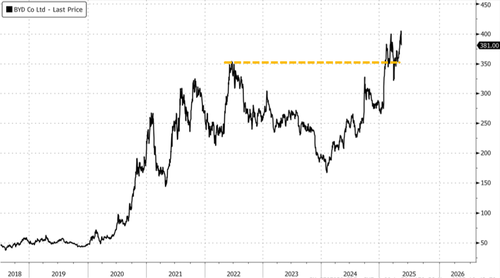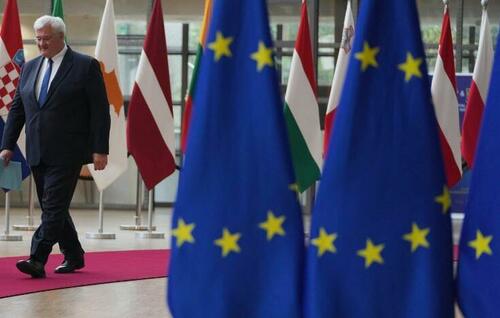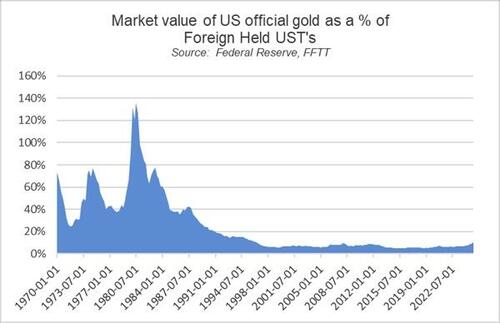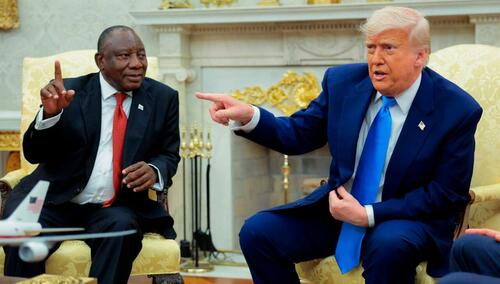To live without faith, without a patrimony to defend, without a steady struggle for truth – that is not living, but existing.
Distinction Matter - Subscribed Feeds
-
Site: LifeNews
Abortion statistics released today by Public Health Scotland show that the number of abortions carried out in Scotland in 2024 was the highest number on record. This represents an increase of 468 abortions, with numbers increasing from 18,242 in 2023 to 18,710 in 2024.
The abortion rate per 1,000 women aged 15 to 44 increased from 17.5 in 2023 to 17.9 in 2024.
Click here to sign up for pro-life news alerts from LifeNews.com
The figures also show a 15.38% increase in the number of babies with Down’s syndrome who were aborted.
There was also a rise in repeat abortions from 7,282 to 7,670. In 2024, 40.99% of abortions were repeat abortions.
Right To Life UK is calling for the Scottish Government to urgently reinstate in-person appointments to prevent women’s lives being put at risk from self-administered abortions.
The figures show that:
-
There was a total of 18,710 abortions in 2024, an increase of 468 abortions from 2023 when there were 18,242 abortions.
-
The abortion rate per 1,000 women aged 15 to 44 increased from 17.5 in 2023 to 17.9 in 2024.
-
There was a rise in repeat abortions from 7,282 in 2023 to 7,670 in 2024.
-
40.99% of abortions performed in 2024 were repeat abortions.
-
-
There was a rise in the number of babies with Down’s syndrome who were aborted in 2024 from 52 in 2023 to 60 in 2024.
-
This represents a 15.38% increase from 2023.
-
This is a 81.82% increase from 2021.
-
-
There were 280 disability-selective abortions in 2024
-
This is a 76.74% increase from 2018.
-
-
There was a rise in the number of abortions at between 18 and 20 weeks gestation from 147 in 2023 to 152 in 2024.
Continued push for introducing extreme changes to abortion law in Scotland
Last September, delegates at the SNP National Conference voted in favour of a resolution calling for “the right to abortion” to be enshrined in a “future constitution of an independent Scotland”.
The resolution states that access to abortion “should not be subject to the changing tides of political or judicial decisions”, and that “legal abortion is a fundamental aspect of healthcare and bodily autonomy”.
The resolution also states that enshrining abortion in the constitution would safeguard access to abortion “against any potential political or legal regression”.
An absolute right to abortion would mean that abortion would be available on demand, for any reason, up to birth. If this radical change were introduced, Scotland would be left with one of the most extreme abortion regimes in the world.
Abortion buffer zones introduced in 2024
The Abortion Services (Safe Access Zones) (Scotland) Act came into force on 24 September 2024, introducing the world’s most extreme buffer zone law in Scotland.
It created a minimum of 200m ‘safe access’, or buffer, zones around any facility that performs abortions where offering support to women would be criminalised. The 200m is a minimum, as abortion providers can apply for the zone to be extended, with the Act giving the Scottish Government the power to extend any buffer zone beyond the 200m if they judge that the existing zone “does not adequately protect” women seeking an abortion. There is no limit on the size of the buffer zone that can be created under this power.
The minimum size of the buffer zones introduced by this law extends further than the minimum size of any other buffer zones in the world. For example, the Public Order Act 2023 in England and Wales sets the limits of the buffer zones at 150m and the legislation does not give the Government the power to extend buffer zones beyond 150m. Most buffer zones in Northern Ireland are 100m, half the size of what is being proposed in Scotland.
Within these zones, it is illegal to influence a person in regard to their decision “to access… the provision of abortion” in an abortion clinic or a hospital. These provisions make offers of help to women seeking an abortion illegal within a buffer zone, and appear to criminalise silent prayer.
Anyone who commits an offence can be fined up to £10,000 on a summary conviction, or an unlimited fine on indictment.
The provisions of the law apply to anything “visible or audible” within a buffer zone, even if these relate to private buildings. This means it may be illegal for pro-life signs to be displayed from a window within a private home or outside a place of worship if the signs are within the boundaries of or visible to a buffer zone. Similarly, conversations in private homes or outside churches may be included if they are audible inside a buffer zone. Referring to private dwellings, Mackay herself told the Committee “it is essential that such premises are covered by the legislation”.
At-home abortion
This significant rise in abortions has accompanied the fourth full year that at-home abortion services have been operating in Scotland. Since home abortions were introduced, a number of significant problems have arisen.
Polling published in the Daily Telegraph last year shows that 71% of women support the reinstatement of in-person appointments and only 9% are in favour of the status quo. In contrast, only 16% of the public support proposals to decriminalise abortion.
Polling also shows large majorities of women in the UK support a number of changes to abortion laws that would have a positive impact on lowering the number of abortions. The polling shows that 70% of women want the current time limit on abortion to be lowered and 91% of women want a ban on sex-selective abortion.
Spokesperson for Right To Life UK, Catherine Robinson, said
“It is a great tragedy that 18,710 lives were lost to abortion in Scotland last year, the highest number on record”.
“Every one of these abortions represents a failure of our society to protect the lives of babies in the womb and a failure to offer full support to women with unplanned pregnancies”.
“This significant rise in abortions has accompanied the fourth full year that abortion services outside of a clinical setting have been operating in Scotland”.
“Ahead of at-home abortions being permanently made available, a large number of MSPs, MPs and medical professionals warned about the negative impact these schemes would have on women”.
“Since then, we have seen these concerns confirmed, with women such as Carla Foster performing at-home abortions well beyond the 24-week time limit, putting their health at serious risk. If Carla Foster had been given an in-person consultation, where her gestation could have been accurately determined, she would not have been able to access abortion pills and this tragic case would have been prevented”.
“The clear solution here is the urgent reinstatement of in-person appointments. This would prevent women’s lives from being put at risk from self-administered late-term abortions”.
“Polling shows that 71% of women support the reinstatement of in-person appointments and only 9% are in favour of the status quo”.
“We are calling on the Scottish Government to urgently reinstate in-person consultation for home abortions”.

The post Abortions in Scotland Have Killed More Babies Than Ever Before appeared first on LifeNews.com.
-
-
Site: AsiaNews.itThe declaration adopted at the ASEAN summit, proposed by current chair Anwar Ibrahim, outlines a series of goals for 2045 aimed at strengthening the role of the regional organisation. A renewed appeal was made to Myanmar to extend the ceasefire and open up space for genuine dialogue. A meeting has been requested with Donald Trump over tariffs. At the same time, trilateral cooperation with China and the Gulf countries is gaining momentum.
-
Site: Ron Paul Institute - Featured Articles
Donald Trump grabbed headlines on Monday with his Sunday outburst directed primarily at Russia’s Vladimir Putin. Here’s his rant:
I’ve always had a very good relationship with Vladimir Putin of Russia, but something has happened to him. He has gone absolutely CRAZY! He is needlessly killing a lot of people, and I’m not just talking about soldiers. Missiles and drones are being shot into Cities in Ukraine, for no reason whatsoever. I’ve always said that he wants ALL of Ukraine, not just a piece of it, and maybe that’s proving to be right, but if he does, it will lead to the downfall of Russia! Likewise, President Zelenskyy is doing his Country no favors by talking the way he does. Everything out of his mouth causes problems, I don’t like it, and it better stop. This is a War that would never have started if I were President. This is Zelenskyy’s, Putin’s, and Biden’s War, not “Trump’s.” I am only helping to put out the big and ugly fires, that have been started through Gross Incompetence and Hatred.
Gee, why would Putin order massive strikes on Ukraine on May 24 and 25? “No reason whatsoever”? It appears that no one briefed Trump on what Ukraine did, starting May 19. Between May 19 and May 25, 2025, Ukraine conducted a significant escalation in its drone campaign against Russia, launching over 700 drones across various regions.
May 19–22: Russia reported intercepting at least 485 Ukrainian drones across 13 oblasts, including 63 targeting the Moscow region. (Business Insider)
May 23–25: Over a three-day period, Ukraine launched extensive drone attacks deep into Russian territory, disrupting civilian life and straining Russia’s air defense systems. Russian authorities reported intercepting over 700 drones, including nearly 100 near Moscow, leading to closures of major airports and jamming of mobile internet across several regions. (The Washington Post)
Just imagine how Donald Trump would react if Mexican drug cartels launched 700 attack drones into the United States. We all know the answer… the US would be bombing Mexico as we speak. Trump’s failure to acknowledge the precipitating actions of Ukraine is a reminder that this man is driven by emotion, not thought or reason. Trump’s outburst, in my opinion, is a disgrace.
Russia’s reaction to Trump’s statement highlights the difference in the quality of leadership in Russia with the juvenile clown show in Washington, DC. Rather than attack Trump, the Russians played it cool. Putin’s spokesman, Dmitry Peskov, made the following diplomatic comment:
Of course, the beginning of the negotiation process, for which the American side has made great efforts, is a very important achievement. We are truly grateful to the Americans and personally to President Trump for their assistance in organizing and launching this negotiation process.
Of course, this is a very important moment, which is connected with the emotional overload of absolutely everyone. At the same time, Putin makes those decisions that are necessary to ensure the security of our country.
I don’t know if Putin and Trump will have another conversation in the near future, but if it does happen, I expect that President Putin will remind Trump that he was responding to the massive Ukrainian drone attack. Unlike the Ukrainians, who targeted civilians, the Russians hit military targets. The evidence for this is clear. Although Russia launched 548 drones and 83 ballistic missiles over the weekend, only 30 civilians died. If Russia was just using reckless violence without regard for what it was hitting, then the civilian casualties should have been in the thousands.
If this conversation happens, I expect that Donald Trump will tell Putin, “Vladimir, I see your point.” Unfortunately, that will be said in private. What Donald Trump has accomplished with this juvenile outburst is to inflame US public opinion against Russia in general and Putin in particular. Painting Putin as an insane leader who uses violence for no good reason, is simply feeding the neocon narrative and is likely to generate more pressure for Trump to endorse imposing more sanctions on Russia and its trading partners.
Reprinted with permission from Sonar21.
-
Site: Ron Paul Institute - Featured Articles
Over the last seven days the Ukrainian military has launched over one thousand drones against targets in Russia. Most of these were shot down by Russian air defenses. There are no reports of any serious damage.
The biggest effect the week long drone attacks achieved was to shut down air traffic in Moscow for several hours.
After waiting a few days the Russian military responded in kind.
Over the last three days a record number of drones and missiles were launched against military installations and production facilities in Ukraine (archived):
Russia stepped up missile-and-drone assaults on the Ukrainian capital of Kyiv and other regions, killing at least 12 people overnight into Sunday after President Trump last week declined to impose further sanctions on Moscow over its refusal to halt its invasion.
Russia attacked with a total of 367 drones and missiles—one of the largest single-night raids of the war, according to the Ukrainian Air Force—in a second consecutive day of pounding strikes that sent civilians running for shelters in the middle of the night.
Over three days the Russian forces used some 1,000 heavy drones plus 58 cruise- and 31 ballistic-missiles to attack Ukraine.
The Russian attacks are overwhelming (archived) the western provided air defenses:
A YEAR AGO, for 30 drones to strike Ukraine in a single night was considered exceptional. Now Russia is saturating Ukraine’s air defences with hundreds of them. On May 25th the Kremlin pummelled the country, with what it called a “massive strike” against Ukrainian cities, featuring 298 drones, probably a record.
Russia is using more missiles, too: 69 were fired on the same night. As a result, Ukraine is once again stepping into the unknown. If the current ceasefire talks fail, which seems highly probable, air-defence units will need to ration their interceptors. More Russian missiles and drones will get through, to strike towns, cities and critical industry.
…
Last year the Kremlin was producing around 300 Shahed drones a month; the same number now rolls out in under three days. Ukrainian military intelligence says it has documents that suggest that Russia plans to increase its drone production to 500 a day, suggesting that attack swarms of 1,000 could become a reality.The Russian forces are now using the sixth iteration of the Shahed drones. These now carry a 90 kilogram explosive load, fly much higher than previously and are less sensitive to electronic countermeasures (machine translation):
The tactics of using “Shahids” are also changing.
‘Now their UAVs are attacking in swarms. Before the attack, ten or fifteen “Shaheds” cut several circles at a distance from the target, at a great distance and altitude of up to four thousand meters, actually out of the zone of destruction of our air defense. Then the “Shaheds” attack targets, diving from a high altitude. At the same time, they are clearly controlled remotely, which indicates that the UAVs are equipped with EW-protected communication complexes with command posts. Because of the new tactics, the effectiveness of eliminating enemy UAVs by means of our air defense systems is sharply reduced, ‘ said officer N., who serves in the Air Defense of the Armed Forces of Ukraine.To be more terrifying Shahid drones now have the wailing sound (1st vid) of Stuka sirens attached to them.

Number of Shahed drones launched against Ukraine
(Bigger)While the drones keep the air defenses busy ballistic missiles and cruise missiles push through.
Ukraine has reportedly eight Patriot missile systems which cover the capital Kiev. (On Saturday at least one (2nd vid) was destroyed in a Russian attack.)
Ammunition for Patriot air defenses are running out:
Lockheed Martin, which builds the Patriot systems and their PAC-3s, is increasing its output to 650 missiles per year. But this is about 100 fewer than projected Russian production of ballistic missiles, with a Ukraine government source estimating the Kremlin has a 500-missile stockpile. It usually takes two PAC-3 interceptor missiles to intercept a Russian ballistic missile.
Supplies for other air defense systems have also run dry (archived):
The growing number of projectiles; their diversity (drones, cruise and ballistic missiles); and the complexity of their flight paths are overwhelming Ukraine’s air defense capabilities. In 2024, Ukraine managed to mitigate damage by implementing a multi-layered system combining numerous light mobile units equipped with anti-aircraft guns, medium and long-range missile batteries, helicopters, fighter jets and a network of jammers spoofing satellite coordinates received by incoming projectiles. In 2024, the destruction or diversion rate for Shahed drones often exceeded 90%. That is no longer the case; today, the rate sometimes drops to 30%.
…
A source told Le Monde that Ukraine no longer has missiles for its two SAMP/T batteries and “has not received a single missile in a year and a half” for the short-range Crotale air defense system.
…
‘We are running out of missiles,’ said Ihnat. ‘There are several Patriot divisions around Kyiv. But they cannot provide 100% protection against ballistic missiles. One battery only covers a radius of 25 kilometers. The Russians have found countermeasures: Iskander missiles perform evasive maneuvers in the final phase, avoiding the Patriot’s trajectory calculations. In addition, the Iskander can release decoys capable of fooling Patriot missiles.’
The relentless improvement of weapons and tactics has given rise to a breathless duel between sword and shield. The sword clearly has the upper hand today. Under attack, Ukraine has responded by ramping up its own aerial campaign against Russia, currently launching over 100 drones per night. The escalation appears inexorable.It is an escalation which the Ukraine has no chance to win.
But there are still propagandists who claim to differ (archived):
Russia’s battlefield strength in Ukraine has started to wane and it could run into serious shortages of manpower and weaponry by next year, even as President Donald Trump retreats from pressure on Moscow to end the war, according to senior U.S. and European officials and military experts.
These reports border on being laughable (archived):
When Russia failed to deliver a knock-out blow in 2022 and to split Ukraine down the middle, Putin had a choice between a reduced war and a war on civilians across Ukraine. He went with the war against civilians—not to be seen as backtracking and to compel Ukrainians to surrender. This decision also backfired. The brutality of the Russian occupation coupled with countless assaults on civilians and civilian .
However, no numbers to support such statements are ever delivered.
As of end of April the UN reported some 13,000 killed civilians killed in Ukraine during more than three years of war.
During a night in which Russia fires more than 350 drones and ballistic missiles while Ukraine uses all air defenses it has against those, a loss of 12 civilians, as reported yesterday, is tragic but a very, very low rate.
In July 1943 the U.S. and Britain launched a week long air raid on the city I live in. Some 50,000 died and 200,000 were wounded; half of its houses burned down.
It shows how ridiculous claims like these are:

(bigger)
The picture General Kellogg attached to demonstrated the claimed “indiscriminate killing of women and children at night” shows the burning Antonov aircraft manufacturing facility in Kiev which was hit Friday night. The facility had been used to produce fixed wing drones for the Ukrainian military.
At the front line Russian troops use first-person-view (FPV) drone directed through fiber wire and thus insensitive to electronic counter measures. Up to 40 kilometers behind the front line Russian drones, controlled through flying radio relay station, manage to harass Ukrainian logistics. Beyond that long range drones, like the Shaheds, engage industrial targets in swarm attacks.
There are also more and more specialized drones to drop bombs or mines. Others, flying high, are used for reconnaissance and to direct artillery. Still others are launched (vid) to directly attack incoming enemy drones.
A Ukrainian soldier describes the consequences (machine translation):
“Meat assaults, when the Russians threw their own into frontal attacks on our positions without the support of drones, although still sometimes occur, but less and less often. Now the assaults mostly start in a different way. First, the Russians launch reconnaissance drones. Then our positions are bombarded with KAB and tightly covered with artillery. Then the Russians immediately lift into the air shock FPV drones, which accurately crumble everything that is left to move after the shelling. They have more and more fiber-based attack drones, which are not hindered by any anti-drone means. And only after that they throw assault groups of 4-5 soldiers on motorcycles and ATVs, or just on foot, whose task is to get to our strongpoints and clear the positions. At the same time, if a year ago we had a clear advantage in UAVs, now we have at least parity, and in some areas the Russian Federation has a very significant advantage. Especially worryingly, the range of strikes is increasing. Drones are already hitting for several tens of kilometers, destroying our logistics in entire directions, ” says UAV platoon sergeant K.
Over the last weeks Russia has introduced several drone innovations. It has increased their production to never before seen levels. It is unlikely to stop here.
Anyone who thinks of countering it should consider where Russian drone capabilities will be next year and beyond.
Reprinted with permission from Moon of Alabama.
-
Site: PaulCraigRoberts.org
The Ever-Widening War
Putin’s dilly-dallying has brought Russia a real war.
Germany’s Merz says there are no more range restrictions on the weapons supplied to Ukraine
https://apnews.com/article/ukraine-germany-merz-weapons-range-4702908e5d98e6c43d9865ea0a8a4130Russia’s response is very weak. The Kremlin seems to be too afraid of war to fight one. https://www.rt.com/news/618180-kremlin-ukraine-long-range-weapons/
-
Site: PaulCraigRoberts.org
-
Site: PaulCraigRoberts.org
It Is Not Only Big Pharma Killing Us
-
Site: Ron Paul Institute - Featured Articles
Folks who believe the current political atmosphere is uniquely hateful have forgotten the boundless vitriol prevailing a few decades ago. During the George W. Bush administration, Republicans relied on push-button rage to suppress all criticism of the war on terror. After I appeared on a 2006 Fox News panel and criticized the Bush administration’s secret illegal financial surveillance regime, I was peppered with hostile emails including this gem: “Every know-nothing lying jackass like you should be rounded up and gassed with the Iraqi poison gas that does not exist according to you.”
I’ve never enjoyed poison gas so I eschewed following that suggestion. Unfortunately, most media outlets remained reticent about publishing frontal attacks on President Bush’s most outrageous policies. So, with a hat tip to Monty Python and Jonathan Swift, I sought to satirize my seditious thoughts into print.
On August 27, 2006, the Los Angeles Times ran my “Modest Proposal: Coerce Congress to Tell the Truth.” That piece was accepted and deftly edited by assistant op-ed editor Matt Welch, who is now the Editor at Large for Reason Magazine. Following is a tweaked version of that piece.
What about Congress?
Do Americans deserve the truth about their members of Congress? If so, citizens should be entitled to use the most advanced fact-finding methods approved by the US government.
Many people are unaware of the revolutions sweeping American jurisprudence. In June, the Supreme Court condemned the Bush administration’s torture of detainees at Guantanamo Bay, Cuba and declared that the president is “bound to comply with the Rule of Law.” The Bush White House was outraged and is browbeating Congress to enact legislation overturning that court ruling and unleashing its interrogators.
Last month, Assistant Attorney General Steven Bradbury notified Congress that the administration seeks to use “coerced confessions” in military tribunals at the Cuba base. Bradbury stressed that “there are gradations of coercion much lower than torture.” Those “gradations” veered away from a 400-year trendline against using brute force to determine facts in judicial proceedings.
Congress will likely pass Bush’s Enemy Combatant Military Commissions Act, approving heavy-handed measures to get the truth from people suspected of bad things. Under the equal protection clause of the 14th Amendment, American citizens should be permitted to use the same methods to pry the truth out of their congressmen, many of whom are also suspected of bad things.
Defense Secretary Donald Rumsfeld has approved a dozen extreme interrogation methods previously banned by the Pentagon, including hooding, forced nudity, and exploiting fear of dogs. When photos from the Abu Ghraib prison in Iraq leaked out in 2004, Sen. James Inhofe proclaimed that he was more “outraged by the outrage” than by the pictures of detainees forced to pile into a naked pyramid and a US Army private female dragging a naked Iraqi guy wearing a dog collar.
Inhofe should be blindfolded, put in a straitjacket, and left in a room full of crazed chihuahuas until he explains why the US military should not be constrained to follow the Anti-Torture Act of 1996.
The most iconic Abu Ghraib photo showed an Iraqi man covered in a shroud, standing on a box, with wires attached to his body as if he were awaiting electrocution. Senate Majority Leader Bill Frist spearheaded the coverup of the CIA’s use of secret prisons that pummeled detainees. Frist could be similarly wired and attired and compelled to balance atop a rickety box until he explains why he believes the Geneva Convention prohibition on making detainees “disappear” is null and void.
Exposure to extreme cold is another favorite tactic for US interrogators, despite occasional detainee deaths from hypothermia. Sen. Joe Lieberman has been the biggest Democratic apologist for Abu Ghraib in the Senate. He could be strapped to a block of ice until he explains how scandals over Bush’s torture regime helps the US win hearts and minds in the Muslim world.
But if you really want the whole truth and nothing but the truth, then you can’t go wrong by replicating the Spanish Inquisition. Waterboarding involves strapping a person to a board and pouring water down their throat and over their nostrils to make them feel like they are drowning. CIA Director Porter Goss assured Congress that waterboarding is a “professional interrogation method,” not torture. CIA agents proved their professionalism by waterboarding one detainee more than 80 times—and didn’t kill him once.
Citizens should be permitted to bring splintery planks, leather straps, and water tanks to interrogate any member of Congress who denies the Iraq war is becoming a debacle. Any public interrogations of elected representatives should strictly follow the same rules that Bush proposes for military tribunals. Anyone could make anonymous accusations against a member of Congress, and no representative would be allowed to see or cross-examine their detractors. Secret evidence would be allowed but only if it incriminated the accused. Medical doctors would be on hand for any interrogation, ready to formally certify that any resulting fatalities were accidental.
Some people may object that giving Gitmo-style equal treatment to members of Congress could tarnish the dignity of democracy. But that is rather quaint, considering all the outrageous tactics that Congress has already rubber-stamped for Bush’s war on terror. Besides, no one is forcing politicians to approve the use of coerced confessions for everyone else in the world. They still have time to avoid reaping what they sow.
No Shame on Capitol Hill
My mockery failed to shame Congress into decency. In the following weeks, legislators rushed to approve Bush’s barbaric interrogation wish-list. The Boston Globe reported that “because of the Bush administration’s restrictive policy on sharing classified information with Congress, very few of the people engaged in the debate will know what they’re talking about.” Fewer than 50 members of Congress knew what actual interrogation methods were being debated. Sen. Jeff Sessions (R-Ala.)—Trump’s first attorney general—boasted, “I don’t know what the CIA has been doing, nor should I know.” Legal analyst Dahlia Lithwick declared, “We’ve reached a defining moment in our democracy when our elected officials are celebrating their own blind ignorance as a means of keeping the rest of us blindly ignorant as well.”
On September 30, Congress passed the Military Commissions Act (MCA), retroactively legalizing torture that occurred prior to December 30, 2005. The act also blocked torture victims from suing the US government. In the weeks before the midterm elections, the Republican Party vilified any Democratic member of Congress who failed to vote for the MCA as a terrorist lover. House Speaker Dennis Hastert (R-Ill) claimed that Democrats who opposed the MCA had “voted in favor of new rights for terrorists.” Hastert’s cachet suffered after a federal judge condemned him as a “serial child molester” and sent him to prison for bank fraud.
Shortly after the MCA was signed, Attorney General Alberto Gonzales announced that there was no such thing as habeas corpus rights for American citizens. Gonzales previously declared that President Bush enjoyed a “commander-in-chief override” regarding laws prohibiting torture.
The following year, the New York Times published classified documents revealing that the Bush torture program explicitly imitated Soviet interrogation methods from the Cold War, including manacling detainees in painful poses for long periods and pummeling them into submission. Gen. Barry McCaffrey complained, “We tortured people unmercifully. We probably murdered dozens of them during the course of that, both the armed forces and the CIA.” But shortly after Barack Obama became president, he effectively issued a blanket pardon for all US government torturers and torture policymakers (this means you, Dick Cheney).
In 2014, the Senate Intelligence Committee finally released a 600-page summary of its report on the CIA torture regime. CIA abuses included death resulting from hypothermia, rape-like rectal feeding of detainees, compelling detainees to stand long periods on broken legs, and thrashing them to stay awake for seven days and nights straight. In some cases, interrogators didn’t know the language of the person they were questioning so they compensated by beating the hell out of them. Psychologists aided the torture regime, offering hints on how to destroy the will and resistance of prisoners. Many detainees were innocent but that didn’t save their skin.
Ironically, after all the shocking disclosures about the Bush-era torture regime, some people still consider my 2006 Los Angeles Times satire to be in bad taste. Instead, plenty of folks likely agree with the conclusion of the Iraqi poison gas email dude: “The reason this country is so screwed up is because of arrogant liberal bastards like you who think they are just so much smarter than anyone else…. Your whole pathetic agenda is to attack the president. I think it is time for you to commit yourself you need serious help.”
Reprinted with permission from Mises.org.
-
Site: Zero HedgeAfter BYD Price War Accelerated, Goldman Says: "We Are Sellers Here"Tyler Durden Tue, 05/27/2025 - 07:45
The EV space took a hit overnight after China's BYD—Tesla's top rival—announced sweeping price cuts of up to 34% across nearly two dozen models. This intensified an already brutal global multi-year price war amid continued softening demand.
Bloomberg reported that BYD slashed prices on 22 of its electric and plug-in hybrid models by as much as 34% in an effort to revive demand.
The Seagull hatchback was reduced by 20% to 55,800 yuan ($7,780), while the Seal dual-motor hybrid sedan saw the steepest cut—down 34%, or 53,000 yuan, to 102,800 yuan.
"While some of these discounts have been in place since April, the official announcement sends a strong signal of how tough the end market is," Morgan Stanley analyst Tim Hsiao told clients.
The discounts come as China's broader economic downturn has increased dealership stock levels. Recent data from the China Passenger Car Association showed that China had 3.5 million cars, or 57 inventory days, in April, the highest figure since December 2023.
"We anticipate peers will follow BYD's price cut," Citi Research analysts wrote in a note. They said Chongqing Changan Automobile has already revealed a 25,000 yuan discount for its Deepal S07 model, as well as Zhejiang Leapmotor Technologies discounted its C16 full-size crossover sport utility vehicle and mid-sized SUV C11.
Citi analysts forecast that discounts announced this past weekend could lead to a 30% to 40% week-on-week foot traffic surge at BYD dealerships.
In markets, BYD shares closed down 6%, while Li Auto, Great Wall Motor, and Geely Automobile all closed in the red.
"EV space continued to add weight as BYD tanked 8.6% after announcing promo discount on 22 models until end of June, worrying investors on profitability and margin," Goldman analyst Keita Umetani wrote in a note.
Goldman analyst Shubham Ghosh told clients, "We were sellers of BYD here and also caught some selling in SOE banks."
-
Site: Novus Motus LiturgicusHere is a hymn to the Virgin Mary, a ‘Theotokion’ from the Canon of Sunday Orthros, tone 1, in the Byzantine Rite: Rejoice, O well-spring of grace! Rejoice, O ladder and door of heaven! Rejoice, O lampstand and golden jar, thou unquarried mountain, who for the world gavest birth unto Christ, the Bestower of life!And from the great hymn to the Virgin Mary, the Akathist, Ikos 3:Rejoice, O Table David Claytonhttp://www.blogger.com/profile/07041908477492455609noreply@blogger.com0
-
Site: Zero HedgeIs World's Biometric ID Model A Threat To Self-Sovereignty?Tyler Durden Tue, 05/27/2025 - 07:20
Authored by Amin Haqshanas via CoinTelegraph.com,
The crypto industry is no stranger to controversy, yet few projects have drawn more scrutiny than Sam Altman’s World, formerly known as Worldcoin.
Promising to verify human uniqueness through iris scans and distribute its WLD token globally, World positions itself as a tool for financial inclusion. However, critics argue the project’s biometric methods are invasive, overly centralized, and at odds with the ethos of decentralization and digital privacy.
At the heart of the critique is the claim that biometric identity systems cannot be truly decentralized when they rely on proprietary hardware, closed authentication methods, and centralized control over data pipelines.
“Decentralization isn’t just a technical architecture,” Shady El Damaty, co-founder of Holonym Foundation, told Cointelegraph.
“It’s a philosophy that prioritizes user control, privacy, and self-sovereignty. World’s biometric model is inherently at odds with this ethos.”
El Damaty argued that despite using tools like multiparty computation (MPC) and zero-knowledge (ZK) proofs, World’s reliance on custom hardware — the Orb — and centralized code deployment undermines the decentralization it claims to champion.
“This is by design to achieve their goals of uniquely identifying individual humans. This concentration of power risks creating a single point of failure and control, undermining the very promise of decentralization,” he said.
When reached out for comment, a spokesperson for World pushed back against these claims. “World does not use centralized biometric infrastructure,” they said, adding that the World App is non-custodial, meaning users remain in control of their digital assets and World IDs.
The project said once the Orb generates an iris code, the “iris photo will be sent as an end-to-end encrypted data bundle to your phone and will be immediately deleted from the Orb.” The iris code, they claimed, is processed with anonymizing multiparty computation so “no personal data is stored.”
World’s disclosure regarding personal custody. Source: World
Evin McMullen, co–founder of Privado ID and Billions.Network, said that World’s biometric model is not “inherently incompatible” with decentralization but faces some challenges in implementation around data centralization, trust assumptions, and governance.
A pattern of tech overreach?
El Damaty also drew a parallel between OpenAI’s large-scale scraping of “unconsented user data” and World’s collection of biometric information.
He argued that both reflect a pattern of aggressive data acquisition framed as innovation, warning that such practices risk eroding privacy and normalizing surveillance under the banner of progress.
“The irony here is hard to miss,” El Damaty claimed. “OpenAI built its foundation by scraping vast amounts of unconsented user data to train its models, and now Worldcoin is taking that same aggressive data acquisition approach into the realm of biometric identity.”
In 2023, a class-action lawsuit filed in California accused OpenAI and Microsoft of scraping 300 billion words from the internet without consent, including personal data from millions of users, such as children.
In 2024, a coalition of Canadian media outlets, including The Canadian Press and CBC, sued OpenAI for allegedly using their content without authorization to train ChatGPT, claiming copyright infringement.
ChatGPT storing personal information against its claims. Source: Sandi Fatic
World, however, rejects this comparison, emphasizing that it is a separate entity from OpenAI. The company said that it neither sells nor stores personal data, citing its use of privacy-preserving technologies such as multiparty computation and zero-knowledge proofs.
The scrutiny also extends to World’s user onboarding. The project says it ensures informed consent through translated guides, an in-app Learn module, brochures, and a Help Center.
However, critics remain skeptical. “People in developing nations, who World… has mainly been targeting up until this point, are easier to bribe and often don’t understand the risks involved with ‘selling’ this personal data,” El Damaty warned.
Several global regulators have pushed back on World’s operations since its launch in July 2023, with governments like Germany, Kenya and Brazil expressing concerns over potential risks to the security of users’ biometric data.
In the most recent setback, the company faced challenges in Indonesia after local regulators temporarily suspended its registration certificates on May 5.
The risk of digital exclusion
As biometric systems like World’s gain traction, questions are emerging about its long-term implications. While the company promotes its model as inclusive, critics say the reliance on iris scans to unlock services could deepen global inequality.
“When biometric data becomes a prerequisite for accessing basic services, it effectively creates a two-tiered society,” said El Damaty.
“Those willing (or coerced) into giving up their most sensitive information gain access… while those who refuse… are excluded.”
World maintained that its protocol does not require biometric enrollment for basic participation. “You can still use an unverified World ID for some purposes even if you do not visit an Orb,” it said, adding that the system uses ZKPs to prevent linking actions back to any specific ID or biometric data.
There are also concerns that World could become a surveillance tool — especially in authoritarian regimes — by centralizing biometric data in a way that may attract misuse by powerful actors.
World dismisses these claims, asserting that its ID protocol is “open source, permissionless,” and designed so even government applications cannot tie back a user’s activity to their biometric data.
The debate also extends to governance. While World says its protocol is moving toward greater decentralization — highlighting open-source contributions and the governance section of its white paper — critics argues that meaningful user ownership is still lacking.
“We need to build systems that allow individuals to prove their humanity without creating centralized repositories of biometric or personal data,” said El Damaty. “This means embracing zero-knowledge proofs, decentralized governance, and open standards that empower individuals, not corporations.”
The need for secure identity systems
The urgency behind developing secure identity systems isn’t without merit. As artificial intelligence grows more sophisticated, the lines between human and non-human actors online are blurring.
“Risks at the nexus of AI and identity are not limited to any one kind of government system or region,” Privado ID’s McMullen said. She claimed that without reliable verification for both humans and AI agents, digital ecosystems face growing threats—from misinformation and fraud to national security vulnerabilities.
“This is a national security nightmare, where unaccountable, unverifiable non-human actors may now be able to engage with global systems and networks, and legacy systems are not built for these types of verification and contextual logic,” McMullen added.
-
Site: Mises InstituteWe know what happened on November 22, 1963, at Dealey Plaza in Dallas, but there is a lot about that terrible day we don't know.
-
Site: Mises InstituteWe know what happened on November 22, 1963, at Dealey Plaza in Dallas, but there is a lot about that terrible day we don't know. But we also know that President Kennedy challenged the National Security State. Did it cost him his life?
-
Site: Zero HedgeFBI Deputy Director Bongino Says Bureau Looking At Several Cases Involving 'Potential Public Corruption'Tyler Durden Tue, 05/27/2025 - 06:30
Authored by Jack Phillips via The Epoch Times,
FBI Deputy Director Dan Bongino said on May 26 that the bureau is looking at launching investigations into cases of potential public corruption.
“Shortly after swearing in, [FBI Director Kash Patel] and I evaluated a number of cases of potential public corruption that, understandably, have garnered public interest,” Dan Bongino wrote in a post on social media platform X on the morning of May 26.
Bongino, a former Secret Service agent and radio host, noted that they “made the decision to either re-open, or push additional resources and investigative attention, to these cases.”
One case that they are looking to target is the FBI investigation into the alleged pipe bombs left near the Democratic and Republican national committee buildings in Washington a day before the Jan. 6, 2021, Capitol breach, he said.
The FBI said in 2024 that a $500,000 reward is still in effect for information leading to the arrest of the pipe bomb suspect. Earlier in 2025, David Sundberg, former assistant director in charge of the FBI Washington Field Office, told CNN that officials are seeking new leads.
“Maybe allegiances have changed or relationships have changed, and it’s time to report [on the suspect],” Sundberg told the outlet.
“Tips from the public really have been very helpful but, as I mentioned, we’re still trying to identify the suspect. So we’re trying to release a little more information such that maybe it will jog somebody’s memory.”
Other cases that warrant more resources include one involving the discovery of cocaine in the White House in July 2023 and the leak of the Supreme Court’s decision that overturned Roe v. Wade in June 2022, Bongino said.
“I receive requested briefings on these cases weekly and we are making progress,” he said in his post.
“If you have any investigative tips on these matters that may assist us then please contact the FBI.”
Also in his X post, Bongino said he and Patel have conducted one media interview together, which was with Fox News in May.
“We decided early on to limit our media footprint overall in order to keep the attention on the work being done,” he said.
“We have chosen to communicate, in writing, on this platform to fill some of the inevitable information vacuums.
“I try to read as much of your feedback as possible but the workday is busy, and my office is a [sensitive compartmented information facility] with limited phone access. In response to feedback, both positive and negative, from our interview last week we will be releasing more information which will further clarify answers to some of the questions asked in the interview.”
In the Fox News interview, Patel and Bongino were asked about the death of convicted sex trafficker and financier Jeffrey Epstein in August 2019. They said his cause of death was suicide, which medical examiners determined after his body was found hanged in a New York City jail.
“They have their right to their opinion but as someone who has worked as a public defender, as a prosecutor who’s been in that prison system, who’s been in the Metropolitan Detention Center, who’s been in segregated housing, you know a suicide when you see one, and that’s what that was,” Patel told Fox News.
Bongino said he agreed with Patel’s assessment that Epstein’s death was by suicide.
“He killed himself. ... I have seen the whole file,” Bongino said during the interview.
Since Epstein’s body was found, there has been widespread speculation that he did not kill himself. His brother, Mark Epstein, told news outlets in 2019 that he believes that his brother did not die by suicide, and he reiterated those claims during an interview with Megyn Kelly in 2024.
Meanwhile, Patel confirmed on May 18 that the FBI is investigating New York Attorney General Letitia James over her real estate transactions.
-
Site: AsiaNews.itIn the race with Washington for dominance in this crucial sector, Beijing has now introduced new educational guidelines aimed at equipping students with the ability to design algorithms by the time they reach secondary school. Rather than solely focusing on developing the most advanced technologies, China aims to win this global competition by cultivating a society that can fully harness the potential of these tools.
-
Site: AsiaNews.itToday's news : Dozens more killed in Israeli air raids on Gaza as settlers march through central Jerusalem to mark the anniversary of its 'unification';Record turnout among overseas voters in South Korea's presidential elections;A weak yen causes Japan to lose its status as the world's largest creditor nation;In Bishkek, Kyrgyzstan's first centre to support mothers and children opens.
-
Site: Zero HedgeMerz Says Western Alliance Has Lifted 'Absolutely' All Range Limits For Arms Sent To UkraineTyler Durden Tue, 05/27/2025 - 05:45
On this extended Memorial Day weekend where many Americans will be spending time with family around the grill, and perhaps at local parades and remembrance events, the showdown between NATO and Russia in Ukraine just escalated in a big way.
German Chancellor Friedrich Merz has announced Monday that Germany, France, the UK and US have lifted prior restrictions on how far the weapons they supply to Ukraine can reach. "Absolutely no limits...," he said.
 Keir Starmer, Friedrich Merz and Emmanuel Macron. via dpa
Keir Starmer, Friedrich Merz and Emmanuel Macron. via dpa
"There are absolutely no range limits anymore for weapons delivered to Ukraine, not from Britain, the French or from us — also not from the Americans," Merz said speaking at a national security forum in Berlin on Monday. "That means Ukraine can defend itself by attacking military positions also in Russia."
Russian media very quickly seized on the comments as representing a major turning point in NATO policy vis-a-vis Ukraine. Bloomberg too has emphasized this gives Ukraine the "greenlight" to strike deep inside Russia.
Of course, any close observer of the war over much of the last year knows that the proverbial gloves have already been off for a long time, on a covert level at least. Ukrainian drones have been reaching far into Russian territory for years for many many months at this point, with US satellite and intelligence assistance.
Chancellor Merz made clear in the Monday remarks:
"There are no longer any range restrictions on weapons supplied to Ukraine, not from the British, not from the French, not from us, not from the Americans either. This means that Ukraine can now also defend itself by attacking military positions in Russia, for example. It couldn't do that until some time ago, and with very few exceptions, it didn't do that until some time ago."
He claimed further, "Now it can. In jargon, we call this long-range fire, i.e., equipping Ukraine with weapons that attack military targets in the rear. And that is the decisive qualitative difference in Ukraine's warfare. Russia attacks civilian targets absolutely ruthlessly, bombing cities, kindergartens, hospitals, and old people's homes." He added: "Ukraine does not do that."
"And we attach great importance to keeping it that way," Merz said. "But, a country that can only defend itself against an attacker on its own territory is not defending itself adequately. And this defense of Ukraine is now also taking place against military infrastructure on Russian territory."
But again, long-range fire utilizing Western systems has been in effect for a while at this point, and cities and residential homes and neighborhoods have indeed been hit, and Russian civilians have died - just as has been happening in Ukraine as a result of Russian attacks.
Whether Washington, London, and Paris have actually pulled the trigger on making this decision 'official' is another question. The White House certainly hasn't changed its public stance, and a moment President Trump has been piling on the pressure for each side to get to the negotiating table.
Europe's decision, if there is one, to lift the missile range restrictions on weapons supplied to Ukraine is dangerous and is contrary to aspirations of reaching a settlement, Peskov said.
— Anton Gerashchenko (@Gerashchenko_en) May 26, 2025
"The decisions, if indeed there are such decisions, are absolutely contrary to our… https://t.co/SpIOGoqlQ5 pic.twitter.com/L1qcicSxplThe Kremlin responded later Monday with its own warning, with spokesman Dimitry Peskov saying that "If such decisions have indeed been made, they are entirely at odds with our aspirations for a political resolution and with the efforts currently being made toward a settlement."
He then said ominously, "Quite dangerous decisions, again – if they were indeed made."
-
Site: AsiaNews.itZurab Dzhaparidze, one of the leaders of the 'Coalition for Change' opposing the Georgian Dream regime, has been arrested for refusing to pay a fine imposed on him for failing to appear before a parliamentary inquiry commission he considers 'illegitimate' due to electoral fraud. 'If people refused to live in lies, the regime would collapse instantly,' he declared.
-
Site: Real Investment Advice
As retirement approaches—or begins—investors often find themselves at a crossroads: How can you preserve the wealth you’ve accumulated while still ensuring it continues to grow? Striking the right balance between growth and safety in your retirement portfolio is one of the most important financial decisions you'll make.
The key is understanding the trade-offs and creating a retirement portfolio strategy that aligns with your long-term financial goals, income needs, and tolerance for risk.
The Growth vs. Safety Trade-Off
In retirement planning, growth refers to investments that have the potential for capital appreciation—such as stocks or equity mutual funds. These investments help your portfolio outpace inflation and support income needs over time.
Safety, on the other hand, focuses on preserving capital and minimizing risk. Conservative investments like bonds, money market funds, and annuities provide more stability, but typically offer lower returns.
The challenge is that favoring too much safety can leave your portfolio vulnerable to inflation and longevity risk (the risk of outliving your money), while leaning too heavily on growth can expose you to market volatility.
Why You Still Need Growth in Retirement
While your working years may be behind you, your portfolio still needs to work for you. Many retirees will spend 20–30 years or more in retirement, and during that time, your cost of living will likely rise.
Growth-oriented investments help combat inflation and ensure that your portfolio can support your lifestyle throughout retirement. Without a growth component, your nest egg may erode faster than expected.
The Role of Asset Allocation
Asset allocation is the foundation of a well-balanced retirement portfolio. It refers to how your investments are divided among asset classes—typically stocks, bonds, and cash equivalents.
A typical retirement portfolio might include:
- Equities for long-term growth
- Fixed income like bonds for income and stability
- Cash equivalents for liquidity and emergency needs
Adjusting this mix as you age or as your financial situation changes is key to maintaining the right balance. For example, a 65-year-old retiree may choose a 60/40 or 50/50 stock-to-bond allocation, depending on their goals and risk tolerance.
Conservative Investments for Stability
Retirement portfolios often include more conservative investments to reduce volatility. These include:
- Bonds: Offer regular interest payments and are generally less volatile than stocks. Bond laddering—buying bonds with staggered maturities—can help manage interest rate risk.
- Annuities: Provide guaranteed income for life or a set period. While they can lack flexibility, they can be a helpful tool for covering essential expenses.
- Dividend-paying stocks: These can offer a blend of income and potential growth, especially from companies with a history of consistent payouts.
Rebalancing and Adjusting Over Time
Markets change, and so should your portfolio. Regular rebalancing—adjusting your asset allocation to match your goals—helps you stay on track. For instance, if your stock allocation grows significantly during a bull market, it may expose you to more risk than intended.
Additionally, consider shifting to more conservative investments as you move deeper into retirement, especially if your spending increases or your health needs change.
Managing Risk Without Sacrificing Opportunity
Balancing growth and safety isn’t about avoiding risk altogether—it’s about managing it wisely. With the right strategy, you can:
- Generate income to cover your expenses
- Preserve capital to support your legacy goals
- Participate in market gains without excessive exposure
A financial advisor can help you evaluate your current strategy, clarify your retirement goals, and adjust your allocation as needed to reflect both current conditions and your future needs.
Ready to fine-tune your retirement portfolio strategy?
Contact RIA Advisors today to schedule a consultation. Our experienced fiduciary team will help you strike the right balance between growth and safety, so you can move forward with confidence.
FAQs
How much risk should I take with my retirement portfolio?
This depends on your age, financial goals, and risk tolerance. Most retirees benefit from a mix of growth and conservative investments.
Are bonds a safe choice during inflation?
Some bonds lose value during inflation, but short-term bonds or Treasury Inflation-Protected Securities (TIPS) can help preserve capital.
Do I still need stocks in retirement?
Yes. Equities help your portfolio grow over time and protect against inflation. They can be balanced with more stable investments.
What’s the benefit of using annuities?
Annuities can provide a guaranteed income stream, which can help cover essential expenses in retirement without relying on market returns.
How often should I rebalance my portfolio?
It’s smart to review your allocation at least annually or after major life events. A financial advisor can help monitor and adjust as needed.
The post How to Balance Growth and Safety in Your Retirement Portfolio appeared first on RIA.
-
Site: Crisis Magazine

Although our country has Protestant roots and is still predominantly Protestant, we are now accustomed to Catholics in high political office. Unfortunately, many of those Catholic politicians—people such as Joe Biden, Nancy Pelosi, and Richard Durbin—aren’t very good Catholics, showing disdain for fundamental Catholic teaching like the dignity of the unborn and the sacredness of marriage. Now…
-
Site: Real Investment Advice
After a bout of relative market tranquility, investors were rudely awakened Friday with a barrage of new tariff actions targeting the EU and Apple. Via Truth Social, Trump recommended a 50% tariff on European Union imports starting June 1, 2025, and a 25% tariff on all iPhones made outside the US.
Regarding the EU, the new 50% tariff replaces the 20% tariff on EU goods set in April. At that time, the EU proposed retaliatory tariffs. Therefore, the new tariff increases the odds of a deeper trade war with the EU nations. The EU as a whole is one of our top trade partners. In 2024, the US exported $370 billion of goods to the EU, while we imported $605 billion, resulting in a US goods trade deficit with the EU of $235 billion. Conversely, we have a trade surplus of $109 billion with the EU in the service sector.
Trump also proposed a 25% tariff on all iPhones manufactured outside the country. If you recall, Apple's CEO, Tim Cook, negotiated with Trump and secured exemptions from steep Chinese import tariffs in April 2025. The new proposed tariffs could significantly increase iPhone prices if implemented and fully passed through to consumers.

What To Watch Today
Earnings
- No notable earnings reports
Economy

Market Trading Update
Last week, we discussed how the rally had repaired much of the previous damage following the correction. As we noted:
"This past week, the market continued its advance. There is little reason to be bearish with key overhead resistance levels broken. However, as shown, the markets are reaching decently overbought levels after being extremely oversold. This suggests that at least for now, the "easy money" has been made. With the market above the 200, and above the 50 and 20-DMA, pullbacks should be between 5600 and 5800. Investors can use such a pullback to increase portfolio equity exposures and reduce hedges accordingly. Conversely, 5000 to 5200 becomes the next critical target if those lower supports are violated. Notably, such would require some unexpected event to unfold."
Several times this past week, we discussed that the market was due for a corrective pullback after reaching more overbought conditions. On Friday, the market gave way early in the morning on fresh comments by President Trump instituting 25% tariffs on Apple (AAPL) on any product not manufactured in the U.S. and 50% tariffs on the EU, as trade talks are not going well. As is always the case, amid a bull run, sellers are still unwilling to sell over fear of "missing out" on rising asset prices. It takes some "event" to bring sellers into the market, which we saw early on Friday.
However, by late afternoon, markets bounced off the 200-DMA and clawed their way higher as comments from Scott Bessent took the sting out of Trump's announcements. Most importantly, he made two significant statements to alleviate concerns over the recent yield rise. First, he expects the US budget deficit "to be something with a 3% in front of it by 2028," with revenue from tariffs to be used to solve the deficit. This is crucial as the CBO projections of never-ending deficits do not consider the effects of policy changes that can lead to economic growth. Tax cuts, deregulation, the coming productivity boost from Artificial Intelligence, or the infrastructure demand for power can significantly impact future growth rates.
Secondly, he specifically mentioned the SLR. The Supplementary Leverage Ratio (SLR) is a rule imposed after the 2008 financial crisis that increased bank capital requirements. This is particularly interesting to the bond market, where reversing that requirement will allow banks to purchase more Treasury Bonds. Bessent noted in his interview that the Treasury is close to "moving the SLR requirement and could see that move by the summer." That shift in the SLR requirement is very bond-friendly and will work to bring rates lower. (For more, read our Daily Market Commentary from last week.)
Even with Bessent's comments, that market remains overbought short-term, and a further consolidation process is likely into next week. At the end of this week, we removed our short-market hedge, added to bonds, and reduced equity exposure. If the market is going to consolidate, we can allow cash to act as the primary hedge. However, if the 200-DMA is violated, the 50-DMA will become the next critical support. From a bullish perspective, the 20 and 50-DMAs are now sloping positively, which should provide rising support levels. Overall, we suspect that the market will stabilize. Of course, there are always risks to be aware of, so increased cash levels are essential now.

We are not "bearish" on the market because buybacks remain a powerful market influence over the next month. The recent surge has been the largest since the October 2022 market lows. However, those will begin to fade in the middle of June, which could weigh on markets into the Q2 earnings reports.

For now, this seems to be an "unstoppable" bull market, and investor spirits have become substantially more bullish. However, all rallies eventually end. That doesn't mean a "crash" is coming, and as noted last week, the market is holding the 200-DMA for now. This suggests the previous correction phase is likely complete with support gathering at slightly lower levels. However, there is never a guarantee, so we have taken some recent gains and raised cash levels. We will be patient for a much better entry point soon.

The Week Ahead
Despite being a holiday-shortened week, we will have a good amount of data and Fed speak to digest. In addition, NVDA's earnings on Wednesday may generate some equity market volatility. As we share below, NVDA is potentially on the verge of a MACD sell signal.
The FOMC minutes will likely further stress that most members are concerned about tariff-related inflation. It will be interesting to see if they address how the recent bout of higher yields impacts their economic outlook. PCE prices and personal income and spending are due on Friday. Expectations are for a slight decline in spending but an increase in income, which alludes to consumers saving or paying down debt. PCE prices are expected to increase by 0.2%.

The Anchoring Problem And How To Solve It
“Anchoring is a heuristic revealed by behavioral finance that describes the subconscious use of irrelevant information, such as the purchase price of a security, as a fixed reference point (or anchor) for making subsequent decisions about that security.” – Investopedia
“Anchoring,” also known as the “relativity trap,” is the tendency to compare our current situation within the scope of our limited experiences. For example, I would be willing to bet that you could tell me exactly what you paid for your first home and what you eventually sold it for. However, can you tell me exactly what you paid for your first soap bar, hamburger, or pair of shoes? Probably not.
The reason is that the home purchase was a major “life” event. Therefore, we attach particular significance to that event and remember it vividly. If there was a gain between the purchase and sale price of the home, it was a positive event, and therefore, we assume that the next home purchase will have a similar result. We are mentally “anchored” to that event and base our future decisions around very limited data.
Today, investors are trained by the financial media to “anchor” to a fixed point in the market. Such is why investors consistently measure performance, relative to the market, from January 1st to December 31st. Or, worse, we measure performance from the peak of an advance. For example:
- The market is up 140% from the March 2020 lows.
- The market is down 10% from the 2025 peak.
- Or, the market is down 6% for the year.
Tweet of the Day

“Want to achieve better long-term success in managing your portfolio? Here are our 15-trading rules for managing market risks.”
Please subscribe to the daily commentary to receive these updates every morning before the opening bell.
If you found this blog useful, please send it to someone else, share it on social media, or contact us to set up a meeting.
The post The EU And Apple Hit With Tariffs appeared first on RIA.
-
Site: Crisis Magazine

On May 14, in his “Address to Participants in the Jubilee of Oriental Churches,” Pope Leo XIV not only praised “the unique spiritual and sapiential traditions that they preserve, and for all that they have to say to us about the Christian life, synodality, and the liturgy,” he also highlighted how the Oriental Churches have “a unique and privileged role as the original setting where the Church was…
-
Site: Zero HedgeToxic Femininity: Foreign-Born Muslim Women In Germany Are Far More Violent Than German MenTyler Durden Tue, 05/27/2025 - 05:00
Authored by Olivia Murray via AmericanThinker.com,
A little while back, the progressive, man-hating feminist movement produced what they surely thought was a “gotcha” condemnation for men—it was a social media trend where women would announce whether they’d rather be alone in the woods with a man or a bear…with a vast majority of women settling on the bear, highlighting “the fear of male violence.” (Never mind that many of these women were completely untouchable, as if the average man would ever desire to assault them, even given the license in a desolate forest.)
Since progressive feminists are the dimmest of society’s bulbs, I can only assume this “man or bear” dilemma was a calculated campaign to manipulate the useful idiots—similar to Lawrence Lader and Bernard Nathanson when they convinced Betty Friedan to include abortion in her ideals (which she originally rejected). The progressive feminist movement that began then was not an organic occurrence, but an orchestrated scheme, directed by…men, which is what I’d call peak irony.
But I digress.
New statistics out of Germany reveal that foreign-born women, but specifically foreign-born Muslim women, are far more violent than native German men. The Remix News staff, which reported on the story, quipped that the revelation “blows up a common myth that has been perpetuated by the left for years”—that men are so violent, a bear is preferable company. (Again, never mind the fact that men, to their own detriment, have been protecting their women for essentially all of human history.)
Here are the numbers for 2024:
Out of 100,000 people, German men were suspects in violent offenses in 272 cases. For Syrian women, that number was 336. Afghan women? Even worse, with a rate of 359. Worse yet? Iraqi women, with “an incredible rate” of 394.
To look at the data a different way, that means Syrian women were around 24% more likely to be violent criminals than German men; Afghan women around 32%, and Iraqi women a whopping 45%.
Here’s another little tidbit:
the number of Syrian men suspected of violent crime? 2,608, or 859% more. Afghan men came in at 2,409, or 786% more, while Iraqi men were 2,479, or 811% more. “However, the crown goes to Moroccan men, who have a rate of 3,388 suspects in the category of violent crime per 100,000.” That means they’re 1,146% more likely than native German men to be accused of a violent crime.
While biological sex certainly plays a role in a person’s tendency to resort to criminal violence, there seems to be more here...like ideology...which explains why *certain* demographics of women are more violent than certain demographics of men.
So, if given the chance between a bear or a Muslim woman (or man)? I’d choose the bear.
-
Site: Zero HedgeFDA Approves Chinese Non-Opioid Painkiller Alternative To Morphine That Could Reduce Fentanyl OverdosesTyler Durden Tue, 05/27/2025 - 04:15
As it relates to fentanyl, it looks the problem - and possibly the solution - could both be coming from China.
The FDA has approved Qamzova, the first China-developed non-opioid painkiller, offering a potential tool to help reduce fentanyl-related overdose deaths.
Created by Nanjing-based biotech firm Delova, Qamzova is the world’s first long-acting injectable analgesic, providing 24-hour pain relief with a single daily dose. The drug is a high-concentration form of meloxicam, a non-steroidal anti-inflammatory (NSAID) in the same class as ibuprofen and aspirin, according to the South China Morning Post.
The SCMP writes that it is described by Sino Biopharm as “the best available alternative to morphine,” clinical trials showed Qamzova nearly halved morphine use and lowered pain scores after orthopedic and abdominal surgeries.
Approved in both the U.S. and China for post-operative pain, Qamzova offers 24-hour relief with one injection, addressing challenges in nighttime pain management. “This is significant for clinical treatment,” said a Shanghai anesthetist.
Li Jianhua, a drug abuse expert in Yunnan, said the drug could help mitigate the U.S. fentanyl crisis “to a certain degree,” though further study is needed to assess long-term risks like potential addiction.
Qamzova contains meloxicam, a non-steroidal anti-inflammatory drug (NSAID), and is seen as a safer alternative for high-risk patients, including the elderly. Existing NSAIDs require multiple doses, while opioids—though effective—carry high addiction risks and serious side effects such as respiratory depression and nausea.
While Delova seeks to meet “unmet medical needs” in pain care, Qamzova also highlights China’s growing pharmaceutical innovation. Its approval comes amid ongoing U.S.-China tensions over fentanyl, with Washington blaming Beijing for failing to stop the export of precursor chemicals—an accusation China rejects.
-
Site: Mises InstituteThe Trump White House has enacted tariffs in the belief that other countries are “cheating” by enacting tariffs against US goods and “manipulating” their currencies. However, with the US dollar being the world's reserve currency, the US has engaged in dollar manipulation through inflation.
-
Site: Mises InstituteOurs in an age when people panic, sometimes for good reasons but often for bad. Governments benefit from panicked citizenry, which is why we always should question those political decisions that can turn our lives upside down.
-
Site: Mises InstituteThe transatlantic slave trade from Africa is a well-known chapter in the history of slavery in the Western Hemisphere, but much lesser known is the enslavement of Native Americans. Many of them were shipped to plantations in the Caribbean where they were worked to death.
-
Site: Mises InstituteMainstream economists define inflation as the increase in an imaginary “price level” that is relatively neutral in its effects. Austrian economists, however, know better, as they realize that the effects of inflating the money supply are anything but neutral.
-
Site: Mises InstituteAmtrak is always on the verge of reviving intercity rail traffic in the US, or at least that is what politicians want us to believe. The truth is that the case for defunding Amtrak has never been stronger.
-
Site: Mises InstituteA free market economy does not generate jobs or money. Instead, it creates wealth through exchange and production. Government intervention, contrary to what mainstream economists believe, does not enhance wealth, but instead destroys it.
-
Site: Mises InstituteThe transatlantic slave trade from Africa is a well-known chapter in the history of slavery in the Western Hemisphere, but much lesser known is the enslavement of Native Americans. Many of them were shipped to plantations in the Caribbean where they were worked to death.
-
Site: Mises InstituteWilliam Nordhaus coined the term “Political Business Cycle” a half-century ago. The idea was that government authorities, particularly the central bank, would manipulate the economy to correspond with election cycles, a practice that continues to this day.
-
Site: Zero HedgeEurope Is Toxic For Investors, And The EU Commission Shows WhyTyler Durden Tue, 05/27/2025 - 03:30
Authored by Lindsay Mark Lewis via RealClearMarkets.com,
Europe has declared itself open for business — unless you're actually trying to do business there.
The European Commission's latest €500 million fine against Apple, levied under the new Digital Markets Act (DMA), is not only a staggering penalty; it’s a signal flare to global investors that Europe is no longer a place of rule-based predictability, but one where political agendas override legal clarity, engagement, or fairness.
Apple’s offense? Attempting — repeatedly — to comply with a complex, evolving law while facing a Commission that gave them the silent treatment. According to correspondence reported by Politico, Apple spent the better part of 2024 making proposals, requesting guidance, and asking for confirmation that it was on the right side of the law. The Commission’s response: Delay, obfuscation, and ultimately, a massive fine that had seemingly been predetermined months in advance.
Let’s call this what it is: regulatory ambush.
In the Commission’s own words, “it is the sole responsibility of the gatekeepers to come up with product changes.” But how can companies do that when the Commission refuses to say what would or would not be compliant? When Apple proposed rolling back some of its rules, the Commission told them to wait for developer feedback. That feedback came from critics — Spotify, Epic, Match Group — and shortly after, Apple began to suspect, correctly, that it was being set up for a fall.
And fall they did — fined half a billion euros for allegedly not complying with a law whose requirements the Commission won’t clearly define. This is not regulation; it's regulatory theater. It’s governance by trapdoor.
This isn’t just a tech story. This is a capital flight story.
Private investment in the EU has stagnated. According to Eurostat, inward foreign direct investment (FDI) flows into the EU were €49.5 billion in 2021, with significant fluctuations in subsequent years. Meanwhile, venture capital funding for European startups fell sharply. Crunchbase reports that funding to European startups reached $52 billion in 2023, down 39% year over year from $86 billion invested in 2022. Additionally, Dealroom.co notes that European startups raised $63 billion in 2023, down 37% from 2022.
Multinational firms want to put their money where laws are clear, processes are fair and predictable, and regulators act like referees, not rivals. The EU Commission’s actions reveal a deep hostility toward the very companies it seeks to regulate, combined with an alarming indifference to due process.
What boardroom would look at this behavior and decide to expand in Europe? What startup would take the risk of entering a market where regulators can move the goalposts in silence and then punish you for not kicking the ball into the invisible net?
The Commission wants to portray the DMA as a rules-based dialogue. But a dialogue requires two sides to speak. When regulators go dark, only to emerge with a fine the size of a small nation's GDP, that’s not law — it’s regulatory brinkmanship.
Some in Brussels may quietly see these fines as a kind of counterweight to U.S. assertiveness — an economic tool to reassert sovereignty in a world shaped by Trump-era tariffs and America’s tech dominance. But that is a dangerous miscalculation. These fines will not protect Europe from trade aggression. They will not shield European industry from another round of Trumpian tariffs or tech restrictions. If anything, they give the U.S. and other trading partners an excuse to escalate, arguing — not without cause — that Europe is targeting foreign firms without providing a fair legal process. Rather than building resilience, this path isolates Europe further and erodes its attractiveness to allies and investors alike.
Europe is now on notice. If this is how the EU Commission intends to enforce its laws, then the real consequence won’t be more tech compliance — it’ll be less tech investment. The most damaging part of this fine isn’t the €500 million Apple will pay. It’s the long-term signal to the world: Europe isn’t a partner in innovation. It’s a minefield.
-
Site: Zero HedgeGermany Deploys Permanent Troops To Lithuania As Russian Offensive BuildsTyler Durden Tue, 05/27/2025 - 02:45
Germany has deployed a permanent military brigade beyond its borders for the first time since the end of World War II, with troops dispatched to the capital of Lithuania. The event was inaugurated by German Chancellor Friedrich Merz, who said during a military ceremony in Vilnius that “the security of our Baltic allies is also our security.”
The decision is part of a series of actions in recent months by European nations to "bolster defenses" on NATO’s eastern flank amid claims that Russia intends to invade greater Europe if they defeat Ukraine. The "domino theory" remains unfounded and the Kremlin has never threatened to attack any country outside of Ukraine. The move to shift troops to Lithuania places them near the border of Belarus (a Russian ally) and within striking distance of Ukraine or the Russian border.
European governments have been threatening an escalation by eventually moving NATO troops into Ukraine in direct confrontation with Russian forces. Vladimir Putin has previously warned that NATO troops in Ukraine represent a red line which could result in nuclear conflict.
Putin asserted that if Ukraine's Western backers deepened their involvement in the war, such as sending troops, the consequences for the "invaders" would be "tragic".
"They must realize that we also have weapons that can hit targets on their territory," Putin said, in apparent reference to increasingly lethal Western weapons provided to Kyiv. "What they are now suggesting and scaring the world with — all that raises the real threat of a nuclear conflict that will mean the destruction of our civilization."
The remarks came after multiple European leaders including British Prime Minister Keir Starmer and French President Emmanuel Macron called for the potential deployment of NATO forces to the region. Lithuania is a member of NATO and their foreign minister suggested at the beginning of this year that the country would be interested in moving its own troops into Ukraine should Kyiv make such a request.
European rhetoric on the war, calls for forced military conscription and the calls for boots on the ground have all coincided with the steady realization among NATO leaders (and the establishment media) that Ukraine is losing the war. With dwindling troop strength and faltering defensive lines, the Russian attrition strategy is beginning to bear fruit. Recent breakouts and big gains on the eastern front are developing alongside a mass buildup of troops near Kharkiv, Ukraine's second largest city.
Rather than focusing on quick territorial conquest, attrition warfare seeks to grind down enemy numbers over time while keeping movements limited. The strategy is slow at first, and then the opponent collapses all at once. Ukraine now seems to be entering this stage of attrition.
This might explain why Germany is moving its troops permanently abroad for the first time in 80 years.
Aerial strikes involving missiles and drones have increased on both sides, with Russia launching their largest missile/drone attack since the beginning of the war this week. The escalation brings into question the chances of a peace agreement, as neither side appears interested at this point in negotiating. President Donald Trump's frustration with the conflict has been further exacerbated by European governments like Germany who are intent on keeping the war going at any cost.
Even though it is clear that a Russian victory is imminent, the Europeans have declared that this simply cannot be, which means that further deployments near Ukraine and Russia are likely and that another world war is on the table.
-
Site: Zero HedgeThe European Union May Be Delaying Trade Negotiations DeliberatelyTyler Durden Tue, 05/27/2025 - 02:00
The EU-US trade deal should have been the easiest to complete.
However, the deal is not progressing because the negotiation team refuses to lift any of the EU’s non-tariff barriers or to discuss the limitations imposed on US agricultural, livestock, and car exports.
These are the reasons why it should have been a concise and quick trade deal:
Most of the United States’ team demands coincide with the Draghi report’s concerns about excessive regulation and internal barriers.
According to Eurochambres estimates, the cost of hyper-regulation for the EU exceeds one trillion euros per year. Draghi himself warned in an FT article, “Forget the US—Europe has successfully put tariffs on itself,” citing IMF estimates that show that internal barriers, regulation, and taxation increase prices in the services sector by 110 per cent and in manufacturing by 45 per cent.
If the EU negotiators had presented a comprehensive package of tariff reductions for agriculture, farming, and the automotive industry, a preliminary deal would have been signed immediately, benefitting everyone. However, the negotiators were only willing to negotiate possible improvements to LNG imports with the vague concept of “strengthening investment,” limiting any tariff negotiation to industrial goods where there was no significant dispute.
The United States’ requests to the European Union were significantly less demanding than the negotiations of burdens from China or India.
Unfortunately, the EU negotiators were only willing to propose plans to lower tariffs on industrial goods and non-sensitive agri-food exports, as well as a clause to keep the US from introducing further tariffs while talks are ongoing, according to Bloomberg. The EU stated that tariffs could be reduced in phases or through a quota system, and higher levies would only come above a certain quantity of imports. Upon review, it appears that these proposals aim to uphold all non-tariff barriers and the majority of tariffs. Tariffs are much higher than those of the United States in agriculture, farming, chemicals, automotive and manufactured goods.
The demands of the United States are not outlandish.
All of these demands simply aim to eliminate absurd regulatory and tariff burdens. Furthermore, the European Union allows the exemption of many of the tariff and non-tariff barriers to products coming from Turkey or Morocco, even China.
The European Commission threatened to impose new countermeasures that could affect €95 billion worth of US products if negotiations to resolve the trade dispute fail. However, the European Union lacks significant leverage in this situation. Its trade surplus is so large, and the barriers to U.S. goods so widespread, that it simply cannot fight back.
The European Union trade surplus, which stands at 150 billion euros and soared 244% in March 2025 compared to the same month of 2024, is not generated by free cooperation and spontaneous trade agreements between free companies. In many sectors, the EU’s production and energy costs are up to 50% and 100% higher, respectively, than those of the United States, yet the exports of the European Union massively outweigh those of the U.S. A significant proportion of the trade surplus of the European Union comes from lifting barriers to others and benefitting from open markets for European products.
The European Union must comprehend that a reasonable agreement can eliminate tariffs in minutes.
The EU negotiators must admit that they would be complying with Draghi’s recommendations and benefitting all businesses, inside and outside Europe, in the process. Therefore, they can swiftly and efficiently reach a deal.
It appears that the negotiators from the European Union are not interested in removing trade barriers, preferring to maintain them at all costs, even if it results in the economy of many member states being weakened. Negotiators seem more concerned about pleasing bureaucrats and finding a scapegoat for the EU’s stagnation in the Trump administration than advancing a deal that benefits US and EU companies.
-
Site: The Unz ReviewAs voices are raised to ban Israel from Eurovision, the song contest takes another step towards irrelevance. Little wonder Russia is reviving Intervision. Austria’s newly crowned Eurovision winner JJ, from Austria, has come out to call for Israel to be banned from the song contest in future, after their act almost won this year. Seventy...
-
Site: The Unz ReviewThe Irish Electoral Commission asked people if they agreed with the statement that a “small secret group” make all major decisions in world politics. Only 47% disagree. Scientists are not popular either: Only half disagree that “Groups of scientists manipulate, fabricate or suppress evidence in order to deceive the public.” In the election we apparently...
-
Site: AntiWar.comOn May 16, Russia and Ukraine held their first direct talks since the first months of the war. Despite the pessimistic evaluation by Ukrainian and European leaders, the return to diplomacy is itself a major achievement and step forward. The talks lasted an hour and forty minutes. Western leaders and Western media have given the … Continue reading "Western Media Falsely Presented the Ukraine-Russia Talks as a Failure"
-
Site: The Unz ReviewWestern journalists – having promoted Israel’s lies for more than a year and half – have grown entirely insensible to their active collusion in genocide Israel’s claim that Hamas is “stealing aid” is so preposterous no serious journalist or politician ought to give it any kind of airing – yet there it is continuously cropping...
-
Site: The Unz ReviewHector is tricked into combat and killed beneath Troy’s city walls. Trump might well heed the moral to The Iliad story. Presentation at the XXIII International Likhachev Scientific Readings, St Petersburg University of Humanities and Social Sciences, 22-23 May 2025 – Transforming the World: Problems and Prospects’, XXIII International Likhachev Scientific Readings, St Petersburg Last...
-
Site: The Unz ReviewHans Vogel exposes the EU’s rewilding agenda as a project that dismantles rural life, drives Europeans into controlled urban zones, and unleashes growing danger through unchecked mass immigration, turning cities and countrysides alike into hostile terrain of wolves, wild boars, and violent “asylum seekers.” With great effort and lavish funding, Europe is being made a...
-
Site: AntiWar.comFormer FBI director James Comey has provoked a First Amendment firestorm with a display of sea shells that included the sequence: “86 47.” Many supporters of President Donald Trump note that in popular culture “86” frequently is used as slang for eliminating (killing) someone. “47,” they conclude, obviously refers to Trump, the 47th president of … Continue reading "James Comey Should be Shunned, Not Prosecuted"
-
Site: The Unz ReviewIn 1995, 30 years ago, Henry Regnery published my book, The New Color Line. Henry told his son Alfred that my book was the second most important book, after Russell Kirk’s The Conservative Mind, that the publishing house had ever published. Reviewers agreed. Irving Kristol, the father of the neoconservatives, called attention in The Public...
-
Site: AntiWar.comDeal-making is said to be President Trump’s specialty, yet after five rounds of indirect talks with Iran – most recently just days ago – we seem as far away from an agreement as ever. The fifth round ended last Friday with no breakthrough, but at least no breakdown. However, each day that passes without a … Continue reading "Take the Iran Deal, President Trump"
-
Site: The Unz ReviewRussian officials will ignore President Donald Trump’s tweets in order to focus on the main chance. “We do not consider the infantile attitude of Trump as a problem,” an official source said, responding to Trump’s statement and tweets of May 26 and 27. “We consider he is the legitimate counter party [for end-of-war negotiations]. We...
-
Site: Zero HedgeA Dying Man Will Try Any MedicineTyler Durden Mon, 05/26/2025 - 23:25
Authored by Chris Macintosh via InternationalMan.com,
Boy, oh boy are things… um… interesting. I almost miss the days of green-haired teenage girls with hairy armpits gluing themselves to the road to make the weather better.
Now we have craziness at the international trade level. At its core, it’s all politics.
The now dead George Carlin had a skit where he told us why he doesn’t vote. To quote:
“I don’t vote. Two reasons I don’t vote. First of all, it’s meaningless. This country was bought and sold and paid for a long time ago. The isht they shuffle around every four years… doesn’t mean a f* thing.
And secondly, I don’t vote because I believe if you vote, you have no right to complain. If you vote, and you elect dishonest incompetent people and they get into office and screw everything up, well… you are responsible for what they have done.”
We’ve had some conversations with clients who are questioning their own voting after the trade war kicked off. The problem with taking a position for or against any politician is that probability is not in our favour. We’re bound to be disappointed because the vast majority of these podium donuts aren’t there for our benefit. Sure, some of the things they may espouse are to our benefit, but then others aren’t. What to do?
Well, I think it’s best not to get caught up in the mental gymnastics of it all and simply keep reviewing the actions and data and then making decisions for ourselves accordingly.
As far as the tariffs go, at first glance they make no sense. The orange man said they are “reciprocal,” but any idiot with two thumbs and an interwebs connection can quickly do the math and determine this is hogwash. What they are is quite simple — they are based on other countries’ trade surplus with the US.
The supposition around “reciprocal” came unglued as soon as they tried to figure out why on God’s green earth there were tariffs on an uninhabited island that has only penguins. Wait… what!? Anyone then following their nose saw that the narrative fell apart faster than logic at a climate change gathering.
What this amounts to is an attempt to restructure creditors. It’s what you do in bankruptcy. Trump appears now to be bringing his experience in chapter 11 proceedings onto the global stage.
This is a big deal! From where we sit, there are four big forces through history that drive everything, all of these are interconnected and in many instances causal to each other:
-
The monetary and credit cycle where nations get into a sovereign debt problem, which needs to be dealt with.
-
Domestic conflict, typically beginning as political disagreement, but where disagreement isn’t resolved by discourse.
-
A rising power challenging the existing power and causing international conflict.
-
Technological changes that assist in disrupting the status quo.
So the first changes the monetary order. The second changes the political order. And the third changes the international order, while the fourth assists in ushering it in.
How does this all play out?
Well, let’s start with what we’ve been watching recently. No, not the Chinese laughing at bringing manufacturing back to the US…
Confucius philosophy says:
“If you want to govern a country, you must first govern your family. If you want to govern your family, you must first govern yourself.”
The issue here isn’t about “fair trade.” It is about survival, though.
Former Greek finance minister Yanis Varoufakis dropped some hard truths about the real reason behind the US- China trade war.
-
The US doesn’t fear China because of “cheap labor” or “IP theft.” What it truly fears is China’s capacity to undermine the US-led global financial order — the very system that allows America to print dollars and buy the world.
-
Wall Street’s aging financial architecture is losing its grip. It can’t control crypto flows. It can’t keep up with new financial ecosystems. China — with its digital yuan, vast industrial base, and rising global influence — is the first real threat to this system.
-
Trump’s “reciprocal tariffs” were never about balancing trade. They were a desperate attempt to slow down China’s rise and protect the dollar system from collapse. Because if China succeeds, the US loses its magic weapon: monetary dominance. See point 2 above.
-
Today, Trump is laser-focused on America’s financial core with the Treasury bond market (America’s lifeline) and the stock market (America’s wallet). Both are fragile. And any external pressure could trigger a chain reaction.
-
The US is now panicking over who’s selling off US Treasuries. China? Japan? Others? Trump reportedly wants to punish any surplus country that dumps Treasuries — with tariffs, of course. This is not about trade. It’s about a dying empire trying to stop the bleeding.
-
In short, America is no longer confident in its own financial fortress. And China is no longer playing by the old rules. This isn’t just a trade war — it’s a war for the future of global finance.
Further to this point, the famous Ben Rickert (for those who’ve watched The Big Short) highlighted this issue:
“For the first time ever, China’s CIPS (Cross-Border Interbank Payment System) surpassed SWIFT in single-day transaction volume. A red banner flashed across Bank of China’s HQ at 1:30AM on April 16, 2025.
CIPS processed a jaw-dropping ¥12.8 trillion RMB in just one day—roughly $1.76 trillion USD. That volume, if verified, overtakes the greenback-dominated SWIFT system in sheer daily cross-border throughput.
No fireworks, no Western headlines. Just one quiet early morning in Beijing where the dollar’s crown slipped. The world’s financial plumbing just got a reroute—through China.”
This of course is known to those who DON’T rely solely on Western propaganda media.
Now, consider the US bond market.
The problem is that the US can’t just do what Milei is doing. The debt is too large, and because US treasuries are embedded in the very fabric of global financial markets, paying down that debt has ramifications that Milei simply doesn’t have to contend with.
To highlight the issue: consider that the most significant effort to cut government spending (DOGE) is set to yield $50 billion in annual savings. Awesome… until you realise that this is on the back of a $7.5 trillion budget. They haven’t even managed to cut 0.75% of spending. Furthermore, the US has to borrow over 10% of GDP annually to keep the lights on.
Now they’re weaponizing the dollar and trade in a desperate attempt to “Make America Great Again.” The rest of the world is preparing.
Something else…
Gold has a long way to go. That being said, it is looking a bit frothy right now, so if you’re the sort that will freak out if you see a decent pullback in a bull market (20-30%), you may want to check yourself on going “all in” here. On the other hand, it’s a bull market, and if — like us — your timeframe runs into the years, then you’re simply ensuring your allocation is adequate and leaving the rest to the market gods.
The old adage is worth considering — never sell a bull market and never buy a bear market. Bonds are in a bear market… and gold is in a bull market.
* * *
We are living through a rare and pivotal moment in financial history — a time when the old order is unraveling, and a new one is being born. The geopolitical chessboard is shifting, trade is being weaponized, and the dollar’s dominance is quietly being challenged in real time. This isn’t business as usual. It’s a systemic clash. If you’re trying to make sense of how to invest amid collapsing narratives, geopolitical chaos, and the breakdown of the global financial order, this is the moment to dig deeper. Download our exclusive special report: Clash of the Systems: Thoughts on Investing at a Unique Point in Time Inside, we explore the key dynamics reshaping the world order — and what it means for your capital. Click here to get it now.
-
-
Site: Zero HedgeMaintaining The Shine Of Our Lost Soldiers On Memorial DayTyler Durden Mon, 05/26/2025 - 22:15
Authored by Allan Stein via The Epoch Times,
Tom Pawlak and Robert Trae Zipperer live 2,200 miles apart, but they share a common belief: that unlike old soldiers, no gravestone or marker of a U.S. military member should ever fade.
For Pawlak, 73, from Arizona, restoring the bronze plaques of veterans and those lost in combat to their original pristine condition has become his mission in life.
Zipperer, 56, is a Navy veteran from Florida who is equally passionate about restoring gravestones.
Pawlak’s quest began during a visit to a private cemetery in Phoenix in 2014, where some plaques were badly tarnished and hard to read.
As Pawlak scrubbed, buffed, and polished one marker, the name of U.S. Marine Pfc. Oscar Palmer Austin began to emerge.
Born on Jan. 15, 1948, Austin died in Vietnam on Feb. 23, 1969.
Pawlak then realized that Austin, a 21-year-old African American soldier from Texas, was not an ordinary recruit; he had received the Medal of Honor for bravery on the battlefield and the Purple Heart after being wounded.
The U.S. Navy later named a guided missile destroyer in his honor—the USS Oscar Austin.
Pawlak reached out to the ship’s commander to share his discovery and the restoration work he had completed. Two weeks later, he received a package from the Navy that contained a flag, as well as a blue cap with “USS Oscar Austin” emblazoned on it.
He began wearing the cap everywhere he went.
“As soon as I began wearing the cap, people would stop me on the street to talk,” he said.
He started going out more often to cemeteries, polishing and sanding the letters on the tarnished bronze plaques, Pawlak said.
Robert Trae Zipperer, founder of VeteranGraves.com, launched a volunteer effort cleaning gravestones across the nation in 2019. Courtesy Robert Zipperer
In 2014, he founded Mission Restore Bronze, a social media movement on Facebook that has drawn thousands of volunteers to the cause.
Remembering a Friend
Originally from Chicago, Pawlak never served in the military. However, he feels a deep connection with veterans and the military—he lost a friend just three weeks after the friend arrived in Vietnam in 1967.
He thinks of him every time he visits a cemetery and notices the sad condition of the bronze grave markers.
“I‘ll walk through a cemetery and see a bad marker. I’ll have everything with me and finish it,” Pawlak said.
Pawlak recalls his first volunteer: a naval commander who wanted to restore his father’s bronze plaque in Tampa Bay, Florida.
Other volunteers would ask him how to clean plaques when visiting cemeteries.
Pawlak offers free jars of his proprietary wax, along with video instructions on how to apply it correctly for lasting results.
The volunteer effort “just exploded from the start,” he said.
“I couldn’t leave the house. I took a shower and had 16 messages when I returned,” he said.
His efforts have inspired at least one Eagle Scout project in the Phoenix area.
In 2017, 13-year-old Levi Brown assembled a team to clean and restore approximately 250 bronze grave markers at Greenwood Cemetery in Phoenix.
Pawlak said he has no idea how many military personnel plaques have been cleaned and restored through his virtual movement.
Tom Pawlak of Arizona started Mission Restore Bronze Markers in 2014 as a one-man effort that has grown into thousands of volunteers nationwide. Courtesy of Tom Pawlak
Most volunteers are people he doesn’t know and has never met in person.
Since his project launched, Reserve Officers’ Training Corps programs for youths have carried the mantle forward, as well as court diversion programs and other groups.
“I‘ll just walk around and hand out wax jars to people,” Pawlak said. “I’ll have markers that I take care of regularly—people I’ve known.”
Often, he'll get a call from a potential volunteer and send a jar of wax on request. Each jar contains enough product to clean 12 to 16 markers.
However, if Pawlak had to estimate the number of volunteers, it would potentially be well over 75,000, based on the viewership of his YouTube videos.
“We’ve included first responders and police. I'll supply them with wax,” he said.
During another visit to Phoenix, Pawlak felt compelled to take action when he noticed that the bronze plaques commemorating the 622 Arizona soldiers killed in Vietnam needed love and care.
With a brush in hand, he and other volunteers scoured, scrubbed, and waxed the bronze plaques and statues of foot soldiers, restoring them to a remarkable shine for Memorial Day.
He’s also cleaned bronze plaques in Washington and even the statue of Gen. George S. Patton at the museum dedicated to Patton in California.
He said that getting down on his knees to clean is easy, but getting back up is hard. He could use more eager, younger volunteers.
Keeping Honor Clean
While researching his family tree in Lee County, Florida, Zipperer observed that many military gravesites were in poor condition, with some hardly legible due to mold.
A veteran's headstone is covered in black mold. Courtesy of Robert Zipperer
The once-bright headstones had turned dark gray, making the names hard to read.
Zipperer faced frustrating regulatory challenges in Fort Myers before finally obtaining the necessary approval to clean the headstones in time for Memorial Day in 2019.
Initially, city officials claimed he needed permission from the families to clean the headstones, warning that he would be trespassing and “soliciting” otherwise.
However, after Zipperer brought his case to the media, the city changed its position.
“I’m just a guy that doesn’t take no for an answer. You can’t have a veteran’s headstone covered in crud. It’s just not American,” Zipperer told The Epoch Times.
The headstone as it now appears after cleaning. Courtesy of Robert Zipperer
Rules for Restoration
Zipperer later discovered no standard operating procedures at the local, state, or federal levels concerning cleaning veterans’ grave markers.
He contacted the National Cemetery Administration in Washington, which advised him to submit a proposal in writing.
Eventually, the agency incorporated his ideas into national guidelines for the volunteer maintenance of veteran and military gravestones.
“The graves just sit out there covered in nastiness,” Zipperer said.
“I’ve had to get out hedge clippers and cut bushes to reach a veteran’s grave enveloped in vegetation.
“You‘ll cut it all back, and you’ll clean it all up, and then you'll scrub the headstone and get it clean.”
The NCA, part of the Department of Veterans Affairs, estimates that it has supplied more than 15 million headstones to national, state, and private cemeteries nationwide since 1973.
In fiscal year 2022, the agency provided 347,361 headstones and markers for military personnel buried in the nation’s cemeteries.
The VA operates 156 national cemeteries and 35 soldiers’ lots and monument sites across 42 states and Puerto Rico.
Members of the 3rd U.S. Infantry Regiment place flags at the headstones of U.S. military personnel buried at Arlington National Cemetery, in preparation for Memorial Day in Arlington, Va., on May 22, 2025. Nearly 1,500 service members entered the cemetery at pre-dawn hours to begin the process of placing a flag in front of approximately 260,000 headstones. Andrew Harnik/Getty Images
More than 4 million Americans, including military personnel from every war and conflict, are interred in VA national cemeteries. Approximately 84 percent of veterans are in private cemeteries throughout the country, according to the American Association of Retired Persons.
Zipperer believes the deteriorating condition of veteran headstones signifies a “lack of caring” and funding.
Through his website, veterangraves.com, he hopes to recruit more volunteers and financial support for his cause.
“The problem is we don’t have the [public] funding,” Zipperer said. “Nobody creates funding for veterans’ headstones. I’m doing what I can do, but I don’t have an unlimited budget.
“Every state should be contributing to this. Every American should be contributing to this cause.”
Zipperer estimates he’s spent more than $500,000 out of pocket to promote his mission on YouTube.
“There are people in Australia who love their veterans as much as Americans love their veterans,” he said.
Before and after images of a bronze veteran grave plaque. Courtesy of Tom Pawlak
“I’m just broadcasting it out there to whoever receives the message.”
Pawlak said he also had to use his own funds to support Mission Restore Bronze Markers.
“I just dedicated myself to doing it,” he said.
Celebrity Appeal
In 2021, before Memorial Day, Zipperer appeared on the ABC syndicated talk show “Live With Kelly and Ryan” to present his case.
The response was nothing like he had anticipated.
“I’m naive, I thought this was going to be it,” he said. “Tom Hanks was going to reach out to me. Clint Eastwood was going to reach out to me. Gary Sinise was going to reach out to me. Steven Spielberg was going to reach out to me.”
Patriotic celebrities, one and all, he said.
“And they would provide the help I needed to make this vision a reality. I thought all the senators and governors were going to call. My phone was going to blow up,” he said.
“Do you know how many people called?”
No one, he said, except for a nice woman in New Jersey, who saw him on television.
“We love our veterans in our county,” the woman said to him over the phone. “We’re going to take up your cause here.”
She asked if Zipperer would attend the county’s Memorial Day celebration, and he agreed.
An American flag at sunset in Springerville, Ariz., on May 25, 2025. Allan Stein/The Epoch Times
Zipperer was struck by the community turnout in Hunterdon County that day.
He finally grasped the true purpose of this mission.
“This is an American cause,” Zipperer said. “We can make this happen.”
-
Site: Zero HedgeAmazonian Tribe Sues New York Times, TMZ, For Defamation Alleging They Were Framed As "Addicted To Porn"Tyler Durden Mon, 05/26/2025 - 21:40
Here's one you don't see every day.
The Marubo Tribe of Brazil’s Amazon has filed a defamation lawsuit in Los Angeles against The New York Times, alleging its coverage of the tribe’s first internet access portrayed them as tech-addicted and obsessed with pornography, according to the New York Post.
The suit, seeking hundreds of millions in damages, also names TMZ and Yahoo for amplifying and sensationalizing the story.
The article “portrayed the Marubo people as a community unable to handle basic exposure to the internet, highlighting allegations that their youth had become consumed by pornography.”
The suit continues: “These statements were not only inflammatory but conveyed to the average reader that the Marubo people had descended into moral and social decline as a direct result of internet access. Such portrayals go far beyond cultural commentary; they directly attack the character, morality, and social standing of an entire people, suggesting they lack the discipline or values to function in the modern world.”
The Times responded to AP saying: “Any fair reading of this piece shows a sensitive and nuanced exploration of the benefits and complications of new technology in a remote Indigenous village with a proud history and preserved culture. We intend to vigorously defend against the lawsuit.”
In his original piece, NYT reporter Jack Nicas wrote the tribe was experiencing challenges familiar worldwide: “teenagers glued to phones; group chats full of gossip; addictive social networks; online strangers; violent video games; scams; misinformation; and minors watching pornography.” He added a tribal leader “is most unsettled by the pornography,” noting young men were sharing explicit videos despite cultural norms that “frown on kissing in public.”
The Post report says that TMZ amplified this angle, publishing a video titled “Elon Musk’s Starlink Hookup Leaves A Remote Tribe Addicted To Porn,” which the lawsuit says “falsely framed the Marubo Tribe as having descended into moral collapse.”
In response, the Times published a follow-up stating, “The Marubo people are not addicted to pornography,” and that the article didn’t suggest otherwise. But the tribe says the follow-up “failed to acknowledge the role the NYT itself played in fueling the defamatory narrative.”
The lawsuit also disputes Nicas’s reporting, claiming he stayed less than 48 hours, not the full week he said. Plaintiffs include community leader Enoque Marubo and journalist Flora Dutra, who helped bring internet access to the tribe and say TMZ's coverage created the “unmistakable impression” they had introduced harmful content.
-
Site: Zero HedgeTeaching Or Treason? U.S. Alleges Fed Economist Spied For BeijingTyler Durden Mon, 05/26/2025 - 20:30
In May 2013, John Rogers, a longtime Federal Reserve economist, was in Shanghai for an academic forum when he received an email that would eventually alter the course of his life and career.
The message was from someone claiming to be a Chinese graduate student. Rogers says he declined an offer of payment but kept in touch, later accepting an all-expenses-paid invitation to return to China. That visit, U.S. prosecutors allege, marked the beginning of a yearslong effort by Chinese intelligence to extract sensitive information from inside one of the most important economic institutions in the United States.
John Rogers
In January of this year, Rogers was arrested by the FBI on federal charges of economic espionage, the Wall Street Journal reports. He is accused of conspiring with Chinese operatives posing as students, handing over internal Federal Reserve materials in hotel rooms in China, and accepting travel accommodations arranged by his handlers. Authorities said they found $50,000 in cash at his Washington-area apartment, which his wife claimed as hers.
Rogers, who left the Fed in 2021, has denied all charges, maintaining that he never knowingly assisted a foreign government. His attorney argues that the indictment is misleading and lacks critical context. “The indictment presents an overly-simplistic, one-sided, and skewed version of events,” the lawyer said, adding that the defense team would mount a full rebuttal in court.
The case is one of the most detailed yet in exposing Beijing’s efforts to cultivate informants within U.S. institutions not traditionally seen as espionage targets, such as the Federal Reserve. American officials say China has broadened its intelligence gathering under President Xi Jinping, targeting not just defense contractors and tech companies, but also government economists and financial policymakers.
A 2022 Senate committee report alleged a coordinated campaign by China dating back at least to 2013 to gain insight into the Fed’s internal operations and decision-making. In one incident cited by the report, Chinese authorities allegedly detained a Fed employee in a hotel and threatened to jail him unless he shared economic data. The Chinese Foreign Ministry at the time dismissed the allegations as “political disinformation.”
In response to the report, Fed Chair Jerome Powell defended the central bank’s security policies, noting that staff travel and contacts with foreign nationals are subject to strict review. The Fed tightened its rules further in 2021, banning staff from accepting gifts or compensation from individuals or organizations in countries under U.S. export controls, including China.
Rogers’s academic and personal ties to China deepened over the years. He earned a Ph.D. in economics from the University of Virginia and joined the Fed in 1994, later becoming a senior adviser researching currency and interest-rate issues. Though he held an impressive title, people familiar with his role said he had limited access to high-level Fed deliberations and did not attend Federal Open Market Committee meetings.
Still, his resume and position appeared to make him an attractive target. In 2017, Rogers returned to China after accepting an invitation from the same “graduate student” who first contacted him. According to an indictment unsealed earlier this year, Rogers asked that his travel and lodging be covered, which the individual agreed to.
That same year, Rogers began an online relationship with Liu Yu, a 31-year-old makeup artist from Shanghai, whom he met through a Chinese matchmaking service called Sky Love. After months of exchanging messages, Rogers arranged to meet her in person during a stop in Shanghai. They spent two days sightseeing, exchanging gifts, and sharing a hot-pot dinner, according to Sky Love, which later publicized the relationship as one of its success stories. The couple married in Hong Kong in March 2018, and Liu gave birth to their daughter later that year in Shanghai.
During this period, Rogers exchanged information with his Chinese contacts, including internal Fed materials and research reports. In one 2018 text message to a handler, he cautioned: “There has to be a lot more done to make this legitimate in the eyes of the Fed. Remember, it has to be teaching and not consulting. I am only allowed to teach.” Rogers added, “That would cause me a lot of trouble!” if the nature of the relationship were questioned.
His attorneys argue that these messages show Rogers’s intent to operate within Fed rules, not to conspire with foreign agents. In court filings, they described the exchanges as part of a teacher-student dynamic.
By the end of 2018, Rogers had taken a sabbatical and was working as a visiting professor at Shanghai’s Fudan University. He allegedly continued to supply notes to his Chinese contacts, including materials prepared for a Fed official awaiting Senate confirmation.
In 2020, Fed officials began raising concerns about Rogers’s foreign connections. In an interview with the Office of Inspector General, Rogers downplayed any wrongdoing but admitted: “They’d come out with packets of hundred-dollar bills.” He denied sharing classified materials, but prosecutors later charged him with making false statements in that interview.
He lost access to most Fed resources soon after and was formally forced out in 2021. Months before leaving, he signed a teaching contract with Fudan offering roughly $150,000 for one semester per year. He also secured a $300,000 research grant from a Chinese government-affiliated institution.
Even after his departure from the Fed, Rogers continued receiving messages from his Chinese contacts. In 2022, one invited him and his wife to Qingdao for another paid engagement, writing, “All related expenses will be covered by us, and we can pay for the class.” It remains unclear if Rogers accepted the invitation.
-
Site: Zero HedgeAbout The So-Called Trump-Ramaphosa 'Ambush'Tyler Durden Mon, 05/26/2025 - 19:55
Authored by Victor Davis Hanson,
Nothing highlights the poverty of the media-Democratic mind than its weary use of echo-chamber buzzwords.
Once Pravda-like instructions are sent out from DNC operatives, mindless media anchors mouth them in lockstep as gospel.
So, it was with the supposed “ambush” when South African President Cyril Ramaphosa met Donald Trump. Trump indeed pressed his guest on a number of issues, from the decades-long targeted killing of white agriculturalists on their farms by black hit teams that have totaled somewhere between 1,500 and 3,500, depending on how one defines such targeted killings.
Trump further wanted an explanation from Ramaphosa on his government’s new legislation aimed at land confiscation without compensation, and the de facto vanishing number of Boer farmers.
Trump was further bewildered by Ramaphosa’s assertion that the new law would not be used to take private property without paying for it (“No, no, no, no. Nobody can take land”), when in fact that was the very purpose of the new legislation in the first place.
Trump also showed Ramaphosa videos highlighting a resurgence of South African extremism of the tired “Kill the Boer” sort.
The dictionaries define “ambush” roughly as “a surprise attack by people lying in wait in a hidden or concealed position.”
Ramaphosa’s visit was no surprise. He, not Trump, requested it. Ramaphosa spoke openly to the media before the meeting that he was planning to convince Trump that there were neither widespread killings of white farmers nor arbitrary confiscation of land.
In sum, Trump was the host; Ramaphosa was the guest, who requested the meeting to present his case for a return of a number of concessions from the U.S. He knew Trump would raise issues that had estranged South Africa from both the president and Congress, and he was calmly prepped, as expected, to offer counterarguments.
But why was Ramaphosa so eager for a meeting?
He knew that South Africa had enjoyed a rare, sweetheart, one-of-a-kind, no-tariff deal from the U.S. that had empowered his nation in the last few years to vastly expand its exports. In 2024, South Africa achieved a staggering near $9 billion surplus with the U.S.
Yet Ramaphosa and South Africa have a funny way of expressing gratitude for the free trade magnanimity accorded by the U.S.—especially both as a recipient of nearly $500 million in annual foreign aid and after raising asymmetrical high tariffs on lots of U.S. imports.
Recently, the South African ambassador to the U.S., Ebrahim Rasool, was expelled after he gratuitously slandered his host, the president, as a white “supremacist”—supposedly playing on “white victimhood as a dog whistle” out of fears of non-white demographics.
Like most globalist diplomats and intellectuals, Rasool had forged long ties with the American left and was accustomed to cheap, virtue-signaling trashing of the U.S. to his sympathetic progressive audiences.
Most in South Africa supported the expelled diplomat’s allegations and smearing of his host president, as he returned home a hero rather than an embarrassment.
South Africa still trades on Nelson Mandela’s conciliation policies abroad, even as it has largely rejected his principles and insidiously transmogrified into an illiberal, violent, and racialist state.
In a characteristic fit of schizophrenic hypocrisy, the supposedly “ambushed” President Ramaphosa recently called the few South African white farmer families “cowards” who dared to consider fleeing his government-institutionalized harassment to resettle in the U.S.
I suppose he meant that they were to play the odds and hope they were not among the 60 to 70 farmers murdered each year for their race, and the hundreds assaulted. Or perhaps they were to take solace from the American left that such stuff happens because South Africa is one of the most violent places on earth, where thousands of blacks are murdered each year—though by other blacks and not for their race.
Why, then, the anger at seeing a handful of farmers leaving? And why would Ramaphosa want any largesse from an administration his own ambassador condemned as racist?
On the one hand, most South African politicians would like nothing better than to see the final riddance of the vestigial seven percent of the population.
But on the other hand, the lesson of Zimbabwe’s expulsions reminds them that such mass flight might well collapse the entire South African agricultural sector, if not the economy in general.
That same incoherence characterized Ramaphosa’s relationship with Elon Musk and his Starlink global internet system. He desperately wants Musk to do for South Africa what he has done for lots of countries, including Ukraine—ensuring high-speed internet at a cut-rate cost to remote areas.
But in contrast, his government uniquely insists that Musk essentially turn over about a third of any South African franchise to black South African partners. Ramaphosa will back down because he wants good Internet more than reminding the world that investors in South Africa must follow its racialist laws of partnership. Nonetheless, Ramaphosa has developed a bad habit of cultivating foreign magnanimity, but in a fashion that is ultimately insulting, often racist, and full of ingratitude.
In other areas, South Africa has sided with Russia in the Ukraine War—an embarrassing fact rarely mentioned by the adoring left.
Indeed, it has facilitated arms transfers between Russia and North Korea, as well as opposed U.N. sanctions on Russia.
South Africa is one of the most anti-Israeli, if not anti-Semitic, nations in the world, and supported the International Criminal Court’s issuance of arrest warrants for Israeli Prime Minister Benjamin Netanyahu. It usually votes at the UN in lockstep opposition to the U.S.
Of course, all that business is South Africa’s own.
But it should not expect most-favored-nation trade status and generous aid from a government its chief diplomat has smeared.
Nor should Ramaphosa have counted on an ebullient White House welcome when he and his predecessors have opposed U.S. policy on almost every international issue. (The media was excited before the meeting that far from being an ambush, Ramaphosa was going to confront Trump and set him straight.)
Indeed, South Africa has aligned itself on most key fault lines with dictatorial China and Russia—without a word of worry about the plight of the Uighurs.
The American Left and the media have blasted Trump, claiming there is no effort to kill white farmers in South Africa.
They claim the “Kill the Boer” mantras belong to a long-ago age of legitimate resistance to apartheid.
Not true.
In fact, Julius Malema, the leader of the “Economic Freedom Fighters,” the third largest party in South Africa, led a huge stadium crowd recently in 2023 in the “Kill the Boer, Kill the farmer” chants. And he added, “The revolution in South Africa is guaranteed.”
Malema is no aberration.
The South African “Equality Court” in 2022 ruled that “Kill the Boer, Kill the Farmer” was not “hate speech.”
If calling for the mass death of an entire minority group is not hate speech in South Africa, then one wonders what possibly could be hate speech in that nation?
Trump hardly needed more evidence that by any traditional measure, South Africa is an ungracious, illiberal “democracy” that relies on U.S. largesse while opposing every element of its foreign policy.
That is why Trump stripped away America’s singular no-tariff policy and slapped a 30 percent tariff on South Africa’s exports to reduce the U.S. trade deficit with Pretoria. The state department will likely not be so ready to issue carte blanche travel, green card, or student visas to South Africans unless applicants can demonstrate credible fear of systemic, institutionalized violence.
Again, there was little animus in Trump’s meeting, and no “ambush” at all. Like the denouement of the so-called Zelensky “ambush,” Ramaphosa will likely be back, realizing that he, not Trump, is the president in need.
The end of the session was more or less a visually aided wake-up call to South Africa. In the future, President Ramaphosa might be wiser to look for Belt and Road help among his apparent true friends and allies. Russia and South Africa are similarly aligned on the Ukraine War, friendship with China, North Korea, and Iran, and share a like-minded common hatred of Israel.
Trump is simply reminding the world that the long-ago optimism of a new Mandela South Africa has long vanished. And U.S. foreign policy needs to readjust to the alterations that South Africa, not the U.S., had previously made to our relationship.
Ramaphosa apparently thinks, like the thousands of South African residents in the U.S., that the adoring, institutionalized, left-wing administrative state, media, universities, and foundations still run the U.S. But at least for the foreseeable future, they do not.
As a result, Trump is wishing South Africa well, not as an enemy, but simply as no longer truly a friend, given its undeniable serial and passive-aggressive hostility.

























